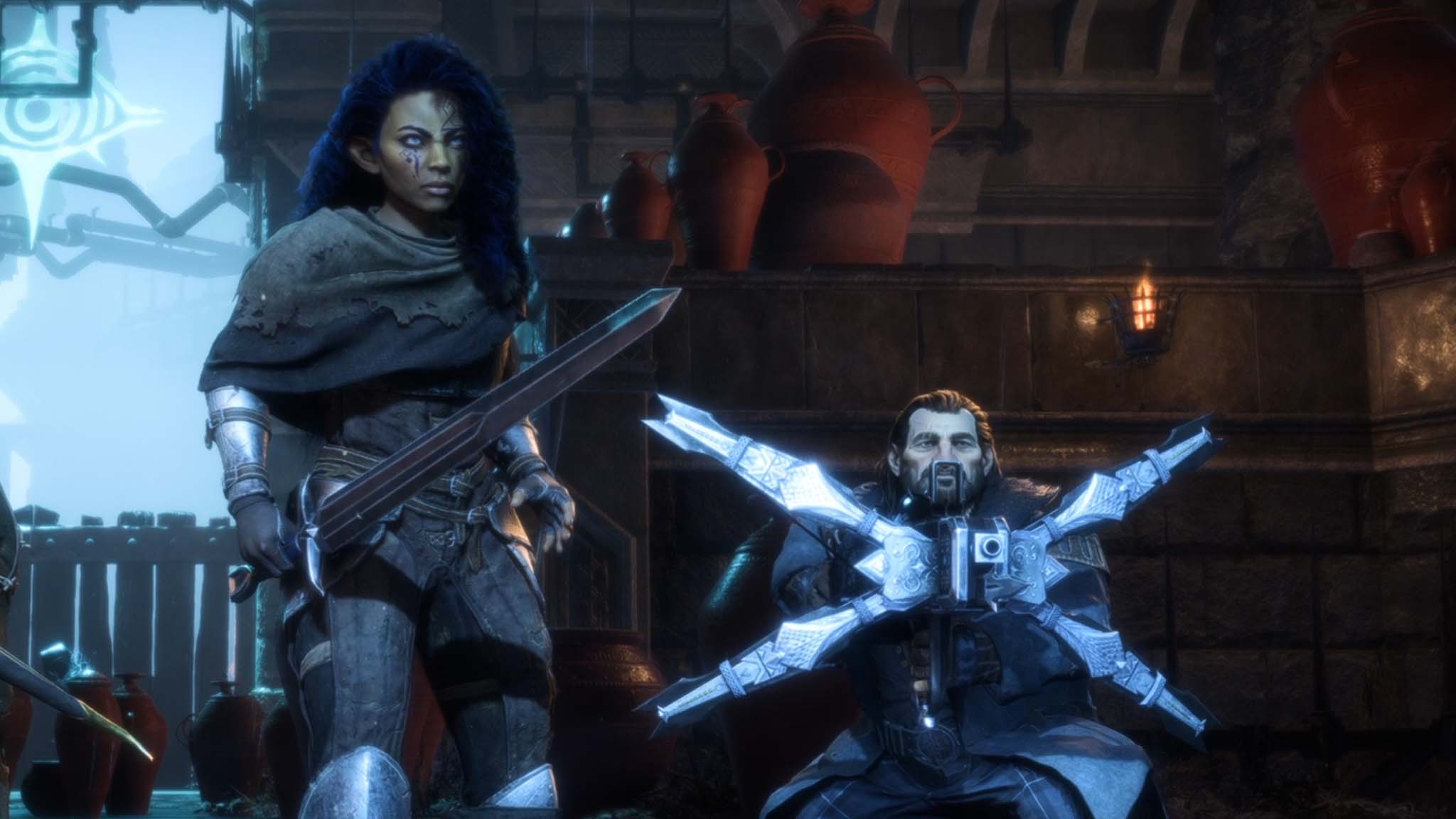
There's a large dedicated Dragon Age fan base eagerly anticipating Dragon Age: The Veilguard, which will be released this Halloween. But if you aren't familiar with the series, that's no surprise. After all, developer BioWare and publisher Electronic Arts (EA) haven't released a new game for this franchise in 10 years — not since the release of Dragon Age: Inquisition in 2014. I, myself, had heard the buzz about the series a decade or so ago, but I had never played a game until recently, thanks to attending a The Veilguard preview event.
According to some veteran fans, The Veilguard is making some significant changes from previous entries, which is interesting considering it's a direct sequel to Inquisition. As someone new to Dragon Age who has spent roughly seven hours playing The Veilguard on PC and who has chatted with Game Director Corinne Busche and Producer Jen Cheverie, I can say I've enjoyed my time with this upcoming fantasy RPG and appreciate its direction. It's now one of the titles I'm most excited about playing this year as a new Dragon Age fan.
So, let's dive in and discuss The Veilguard from the perspective of a new player. How approachable is the storyline, how does combat work, and what is the overall gameplay experience like?
An impressive character creator and gorgeous aesthetic
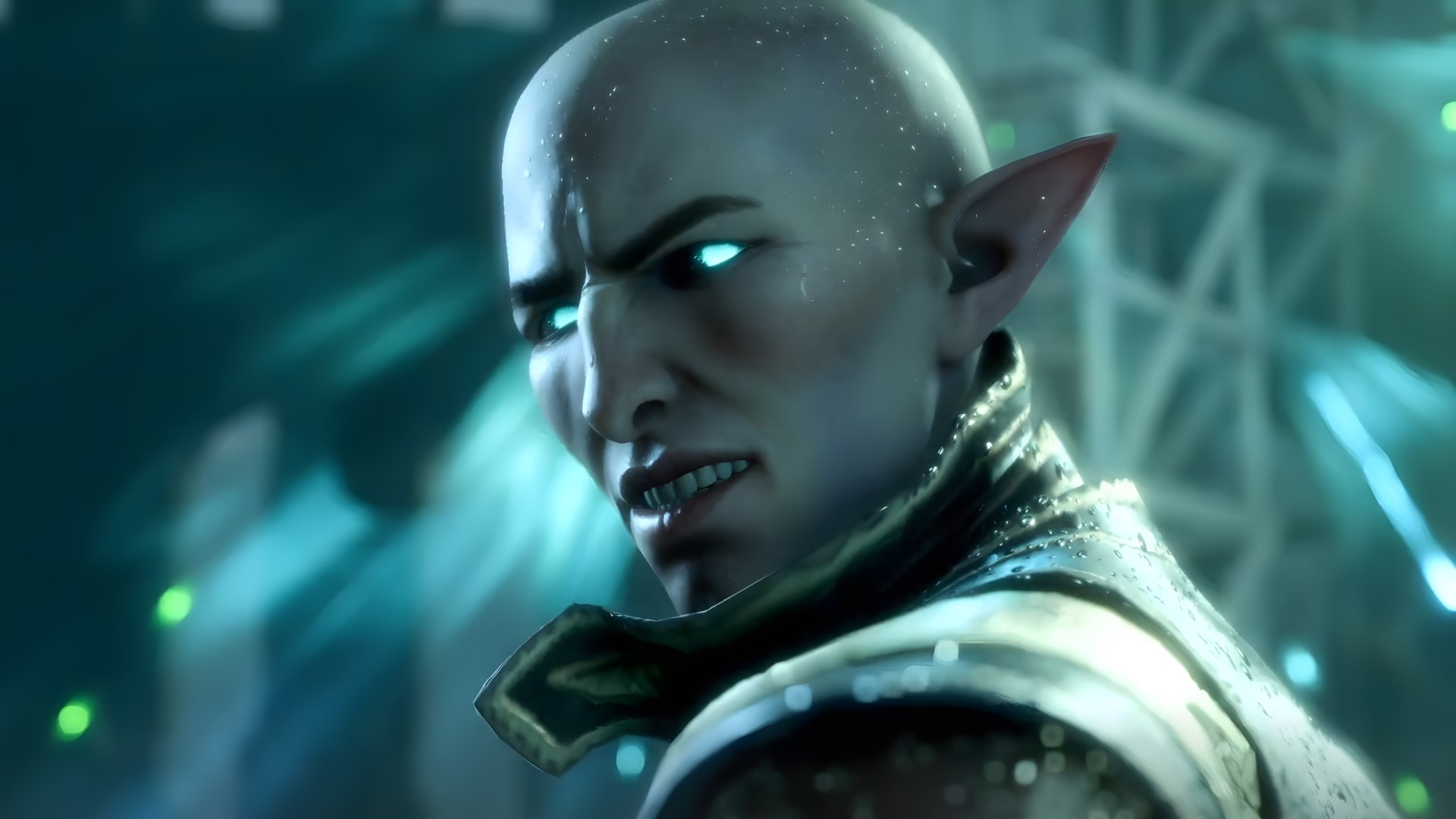
Price: $69.99 MSRP
Developer: BioWare
Publisher: Electronic Arts
Genre: Action-adventure RPG
Platforms: Xbox Series X|S, Windows PC (Steam), PlayStation 5
Previewed on: PC
Release date: October 31, 2024
Xbox Game Pass: No
As with most high-fantasy RPGs, The Veilguard starts by having me create my character — a person known as "Rook" in-game. As part of this process, I choose my lineage (Elf, Qunari, Human, or Dwarf), appearance (more on that to come), class (rogue, warrior, or mage), and faction (Grey Wardens, Veil Jumpers, Shadow Dragons, Lords of Fortune, The Mourn Watch, or Antivan Crows). Most of these decisions affect how non-playable characters (NPCs) interact with me during my playthrough.
For the start of the game, I chose to play as an Elf Warrior who was part of the Antivan Crow faction. I also played as a Qunari Mage and a Human Rogue at different points during the preview, so I'll talk about all of these experiences. But for now, let's talk about the art style and character creator.
- Dragon Age: The Veilguard Standard Edition: Walmart (Xbox) | Amazon (Xbox)| Best Buy (Xbox) | CDKeys (PC) | Steam (PC)
- Dragon Age: The Veilguard Deluxe Edition: Walmart (Xbox) | Amazon (Xbox) | Best Buy (Xbox) | CDKeys (PC) | Steam (PC)
Amazing textures and hair physics
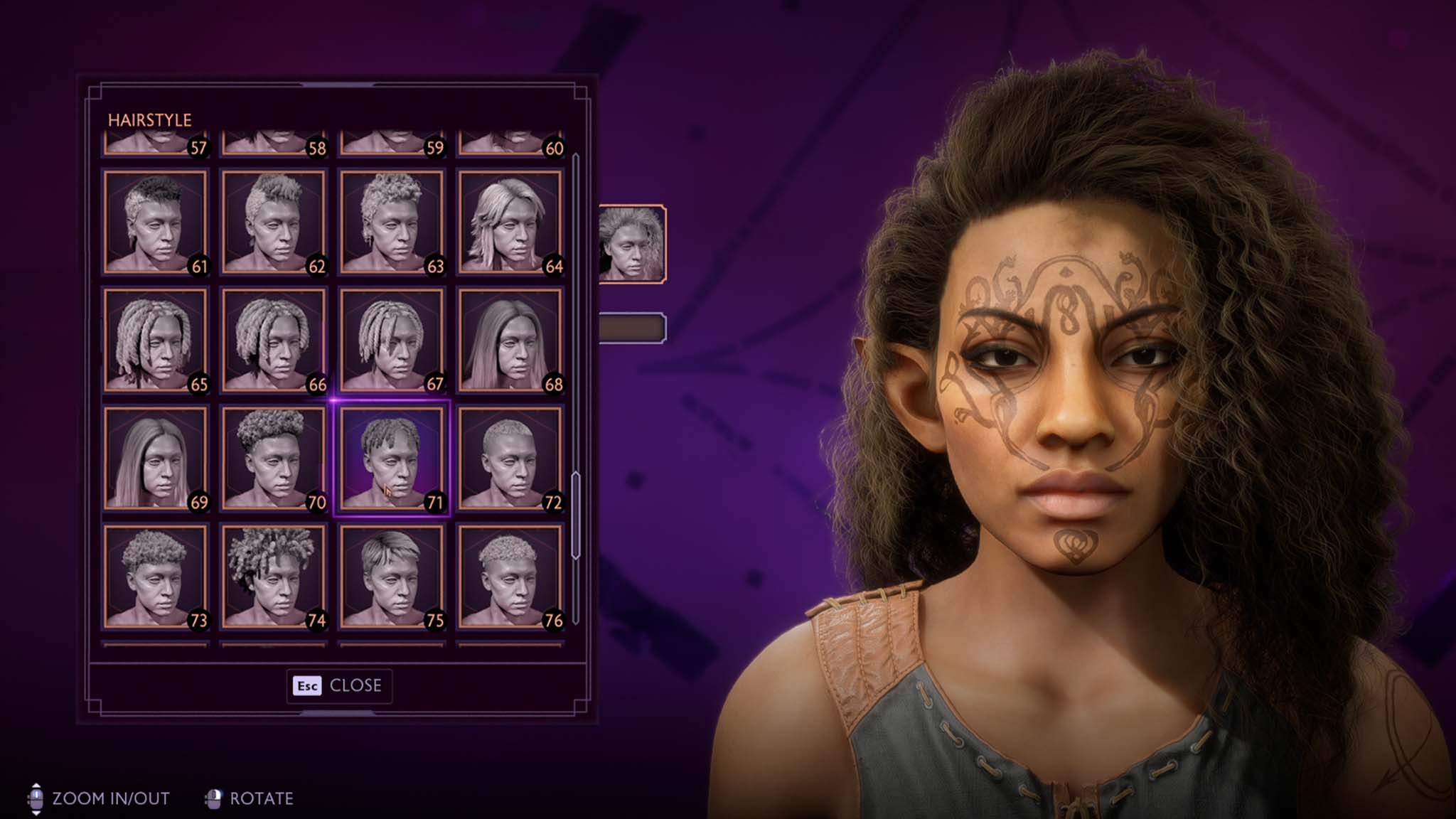
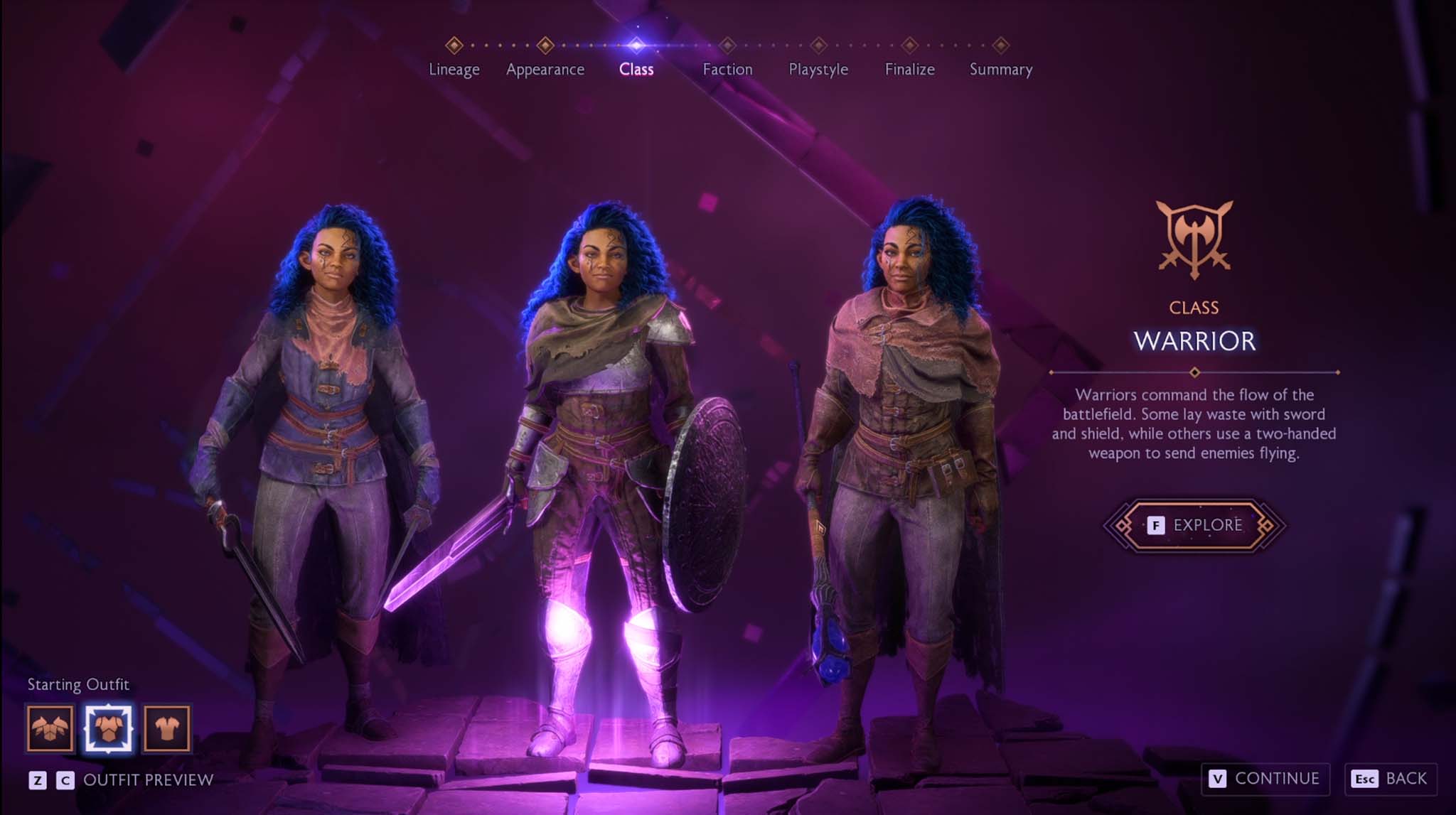
After the first The Veilguard trailer was released, several people on the internet complained that the art style was too cartoony, but after viewing it for several hours, I can say I love it. There's definitely a stylized design to buildings and characters, but when viewed up close, textures and details are incredible.
I don't know how many times I found myself admiring the light reflecting off of cobblestones or the slightly transparent skin that made each character respond to lighting in a realistic way. There was even one point where I sat mesmerized, watching the wind blow through the trees, shifting leaves and blades of grass in the light of a soft setting sun. It's a very beautiful game, and my appreciation for it started right from the beginning with the character creator.
The Veilguard has one of the most impressive character creators I’ve ever seen.
Let me tell you, The Veilguard has one of the most impressive character creators I’ve ever seen. As Busche repeatedly emphasized, “Be who you want to be” was one of the team's main focuses, if not the main focus for the player experience. Nearly every aspect of my The Veilguard character can be customized, including hairstyles, facial features, gender, pronouns, vocal pitch, and more. Some of these options even included sliders for me to determine features such as the exact shape of my face, my body type, and more. I was even able to determine whether my character had cataracts and how pronounced they were, something I've never seen in a game.
As someone with curly hair, I’ve often found games are pretty scant on curly hairstyles, but this was not the case with The Veilguard. With a massive list of options, I quickly found a hairdo I wanted to use rather than just settling for one.
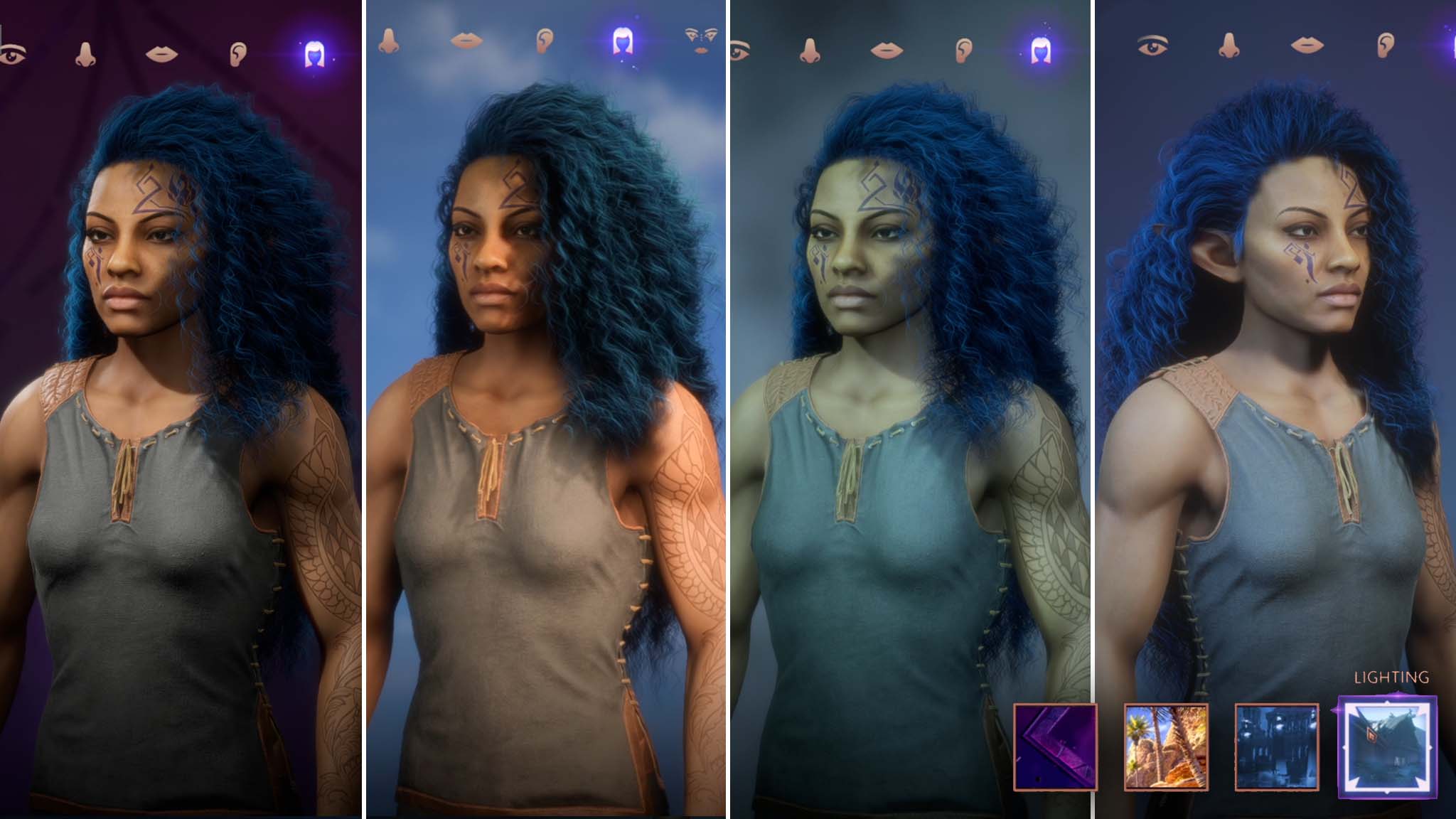
On top of that, The Veilguard's hair physics are so realistic that I ended up staring at my characters' heads in awe the entire time I used them. There's a softness and a weight to these strands that gives them depth and a natural sway as my character dashes around. Seriously, The Veilguard team must have made some kind of deal with the devil or invoked some true wizardry to pull this off.
Busche repeatedly emphasized, “Be who you want to be” was one of the team's main focuses, if not the main focus for the player experience.
Now, I've played several RPGs, and I don’t know how many times I’ve used a character creator menu in other games only to find that my creation looks completely different when in the light of actual gameplay, but that's not a problem with The Veilguard.
I was delighted to find that the game allows me to view my creation in four different lighting scenarios (basically mystical purple, bright and sunny, moody night, and foggy). Using these lighting previews, I realized that the hair color I had initially chosen looked more green than the blue I was going for, so I was able to adjust these tones before starting the game. You don't have to feel too worried about getting everything right in the character creator, though, since many of these options (possibly all) can be changed at the Mirror of Transformation at the Lighthouse, the game's main hub.
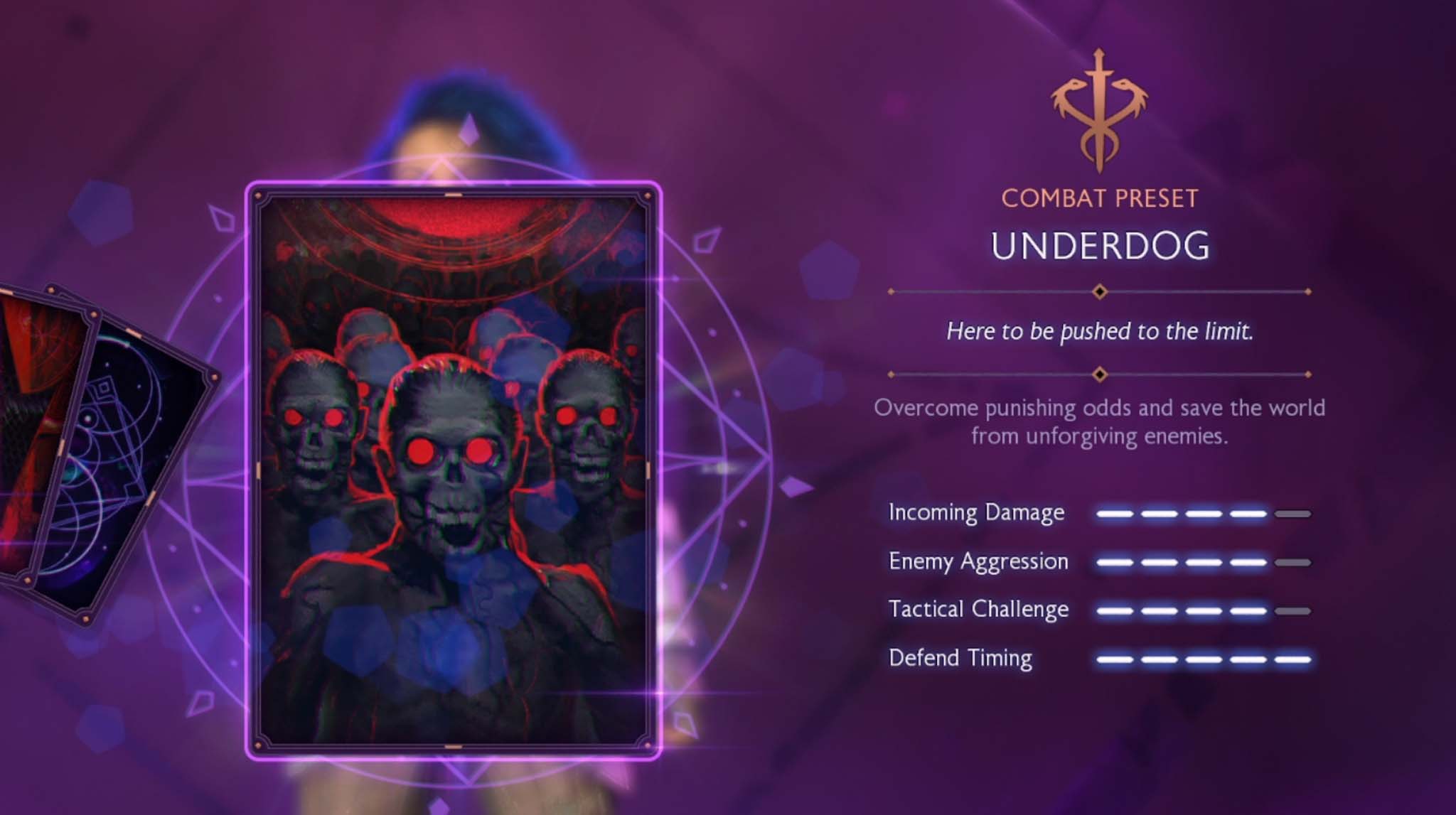
Just before starting the game, the menu let me choose from five difficulty levels: Storyteller, Keeper, Adventurer, Underdog, Nightmare, and Unbound (custom). A helpful chart on the right of the screen informed me of how challenging Incoming Damage, Enemy Aggression, Tactical Challenge, and Defend Timing would be, so I chose an experience that best suited what I was looking for. I started my preview experience on Adventurer, which is basically the "Normal" option.
Intriguing plot and companions
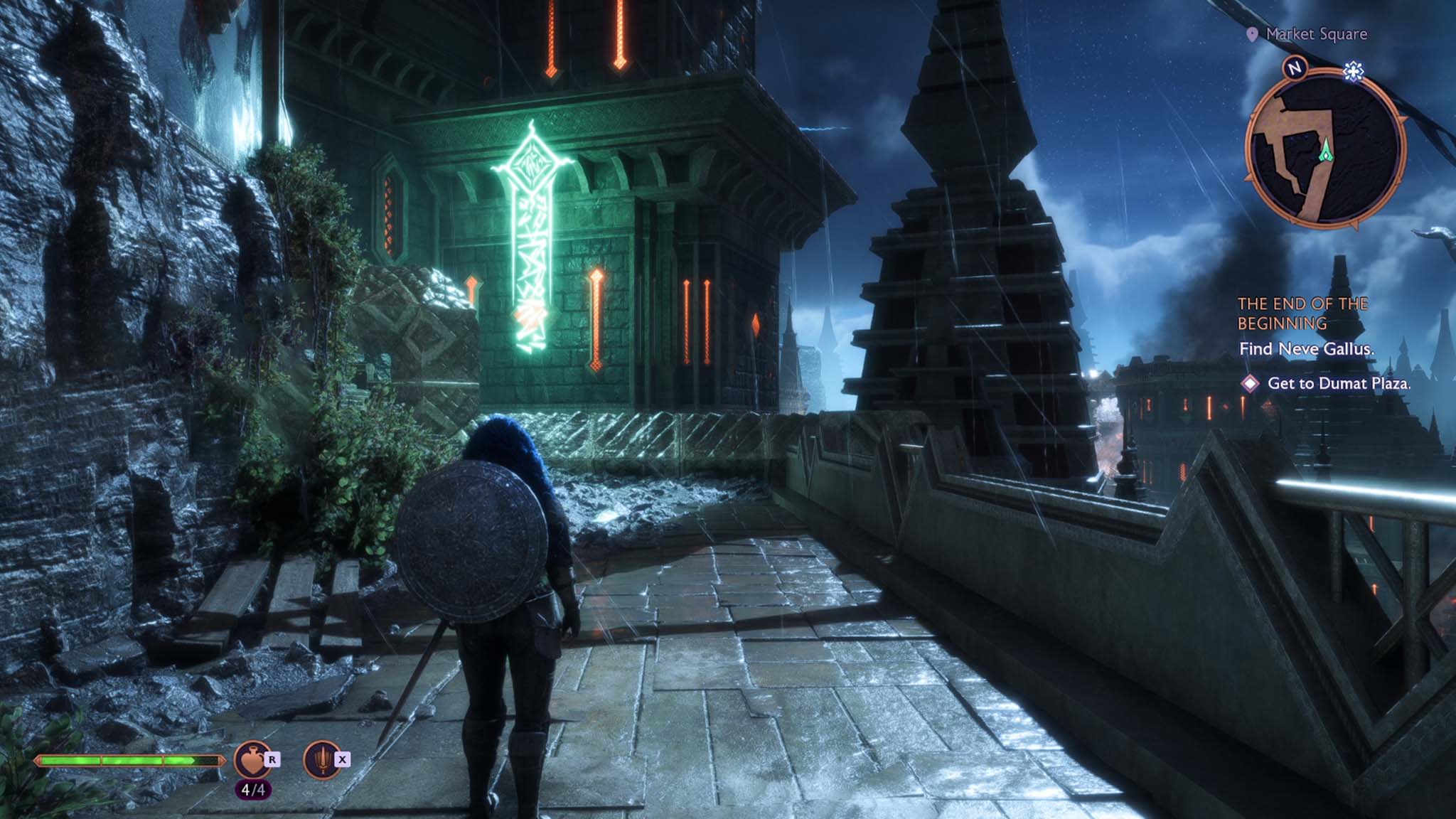
In preparation for the Veilguard preview, I downloaded Dragon Age: Inquisition onto my gaming handheld (the ROG Ally X) and played a few hours of it, but I didn't finish my playthrough. As such, I have a bit of an understanding of The Veilguard's returning characters and continuing story, but not fully. This worked out because I was curious to see how easy it was for new players to dive into The Veilguard without knowing the previous games' storylines.
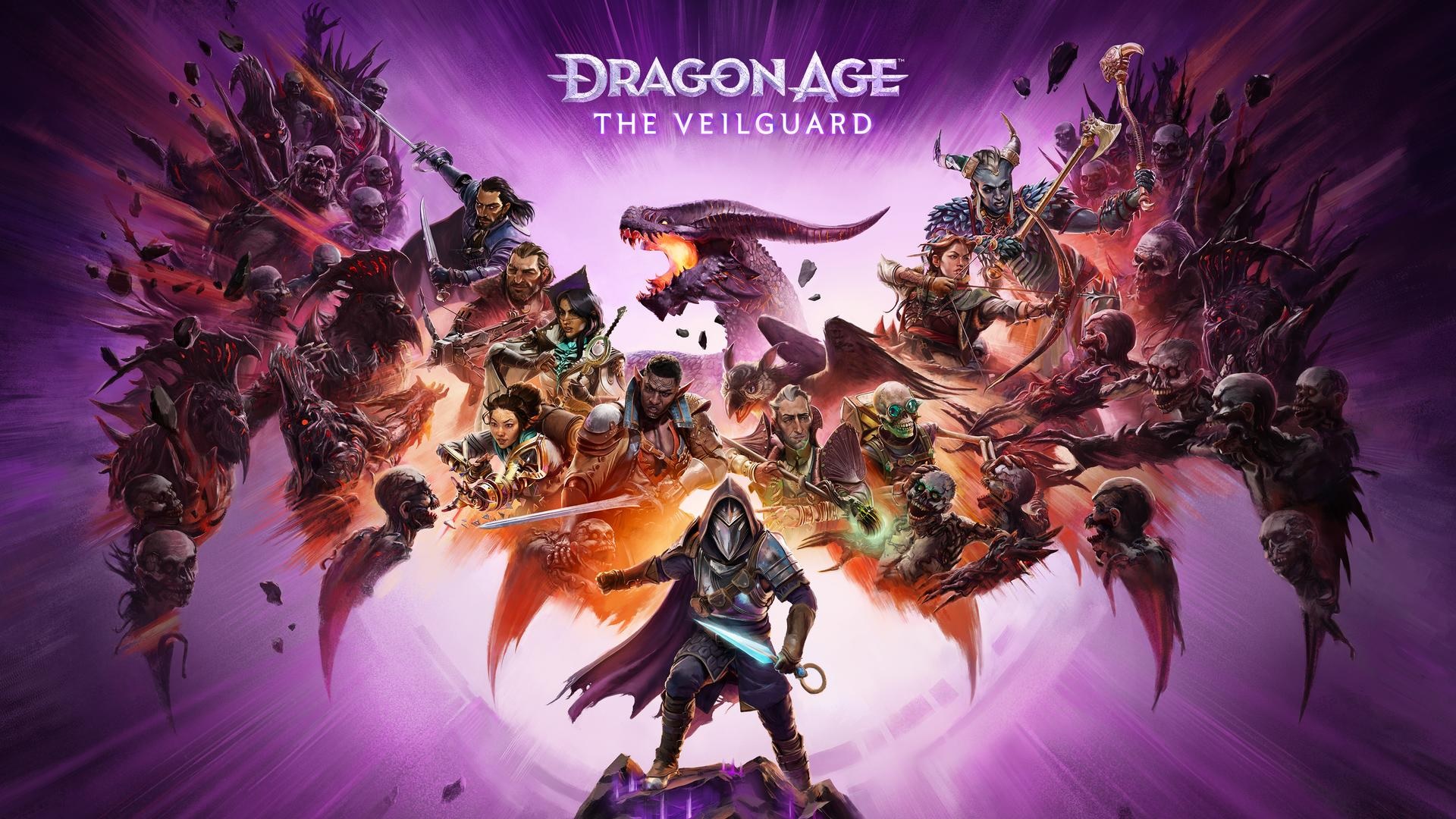
• The Veilguard preorder guide
• Inquisition is great on handhelds
• Best DA Origins mods
• All The Veilguard companions
• The Veilguard PC system requirements
Shortly after starting, I was introduced to returning characters Varric Tethras, Lace Harding, and Solas (Dread Wolf, Fen'Harel) before meeting a new character, Neve Gallus. Immediately, it's understood that the first three characters have some kind of history, and this adds to the complex tension between them. Solas (who is an ancient Elven Trickster god) is in the middle of a ritual that will apparently restore elven power and immortality in exchange for tearing the Veil and allowing demons and Darkspawn into the world. However, my party of The Veilguard companions interrupts him, which allows two of his powerful elven enemies to be loosed from an ancient prison. Now, these elven deities seek to destroy the world just like they sought to a long time ago.
The main plot of the story is then posited to you — You're tasked with defeating these two elven gods, putting a stop to Solas, defeating demons, and making things right in Thedas. Your group is now known as the titular Veilguard.
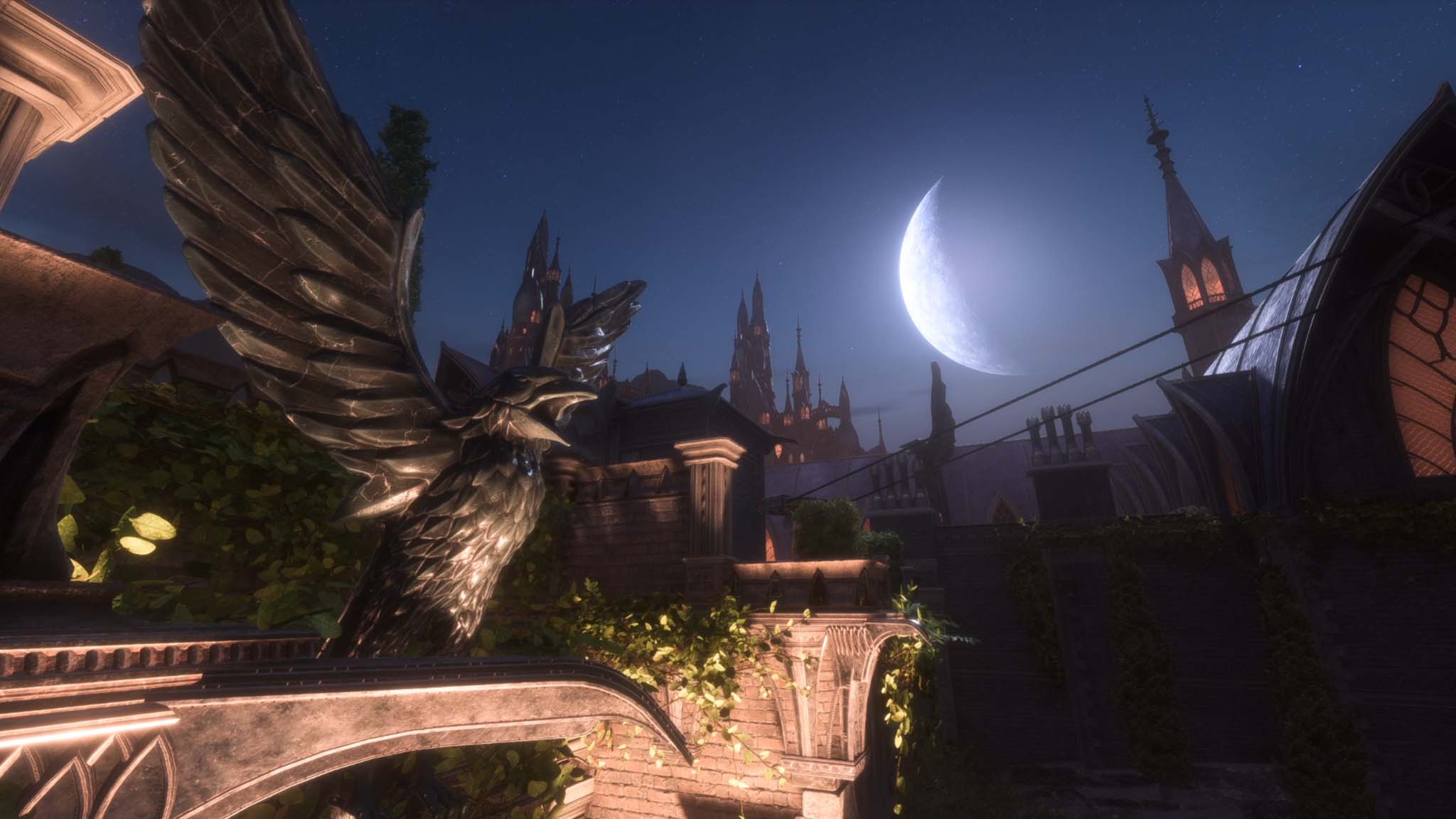
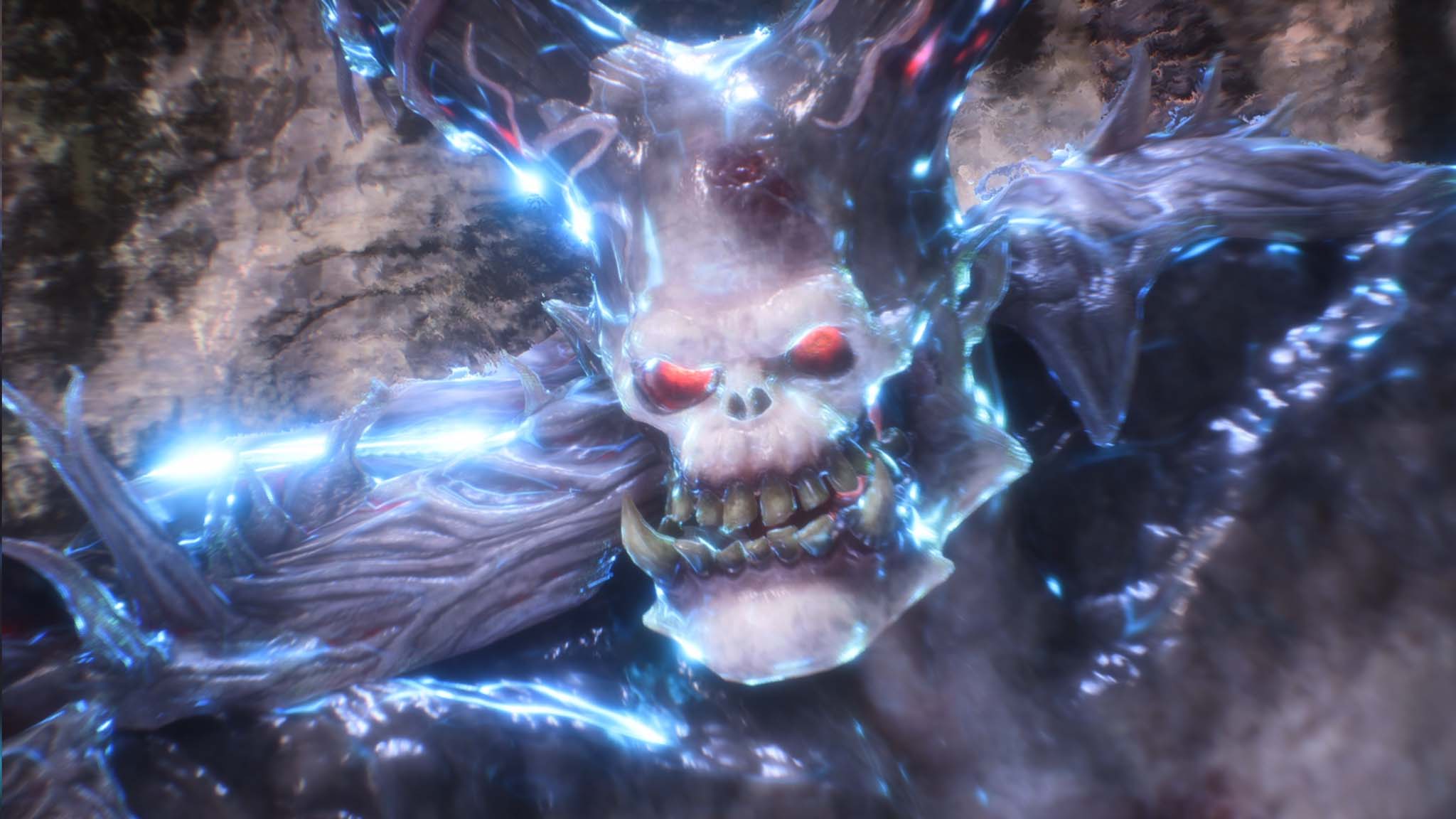
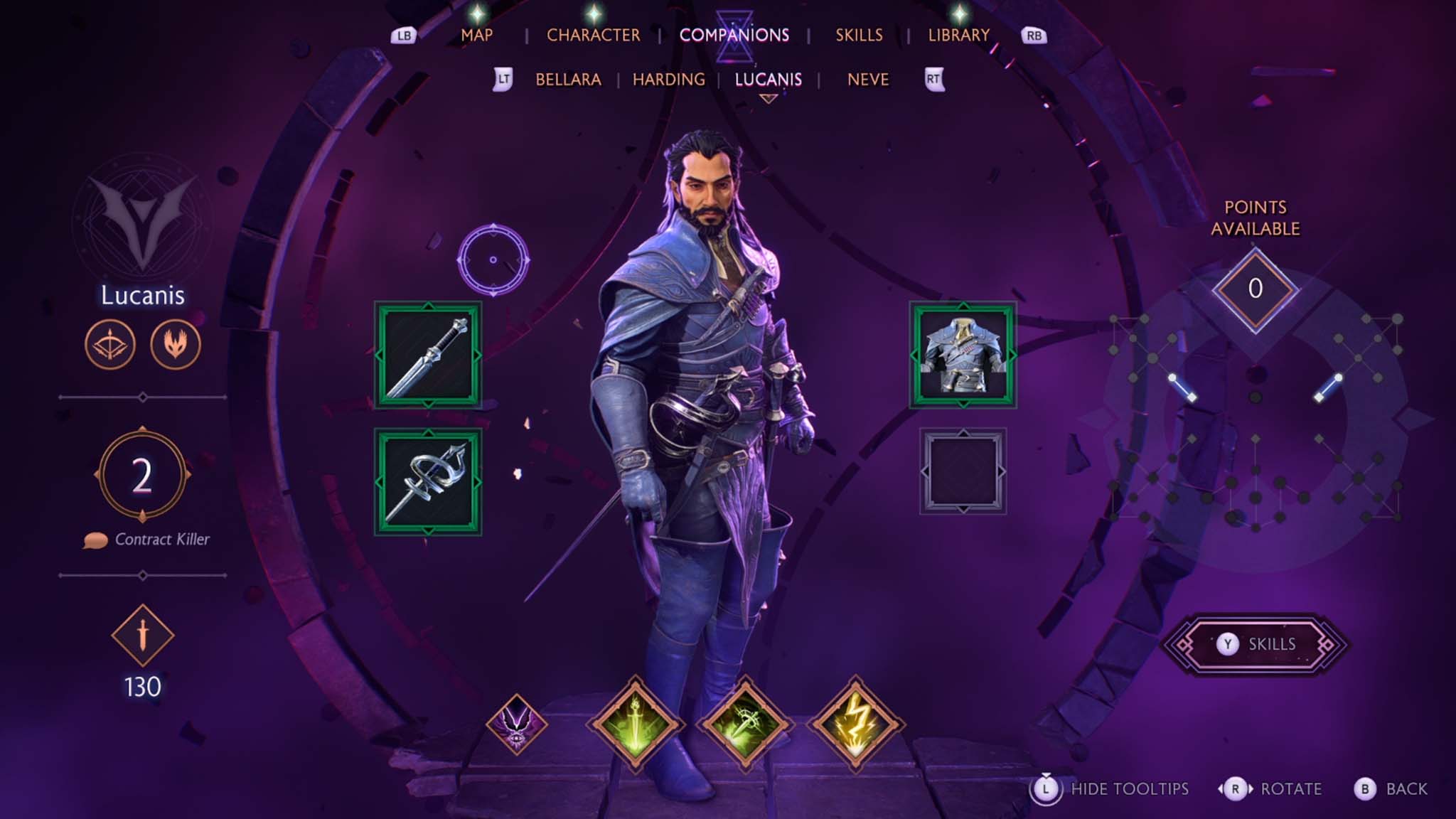
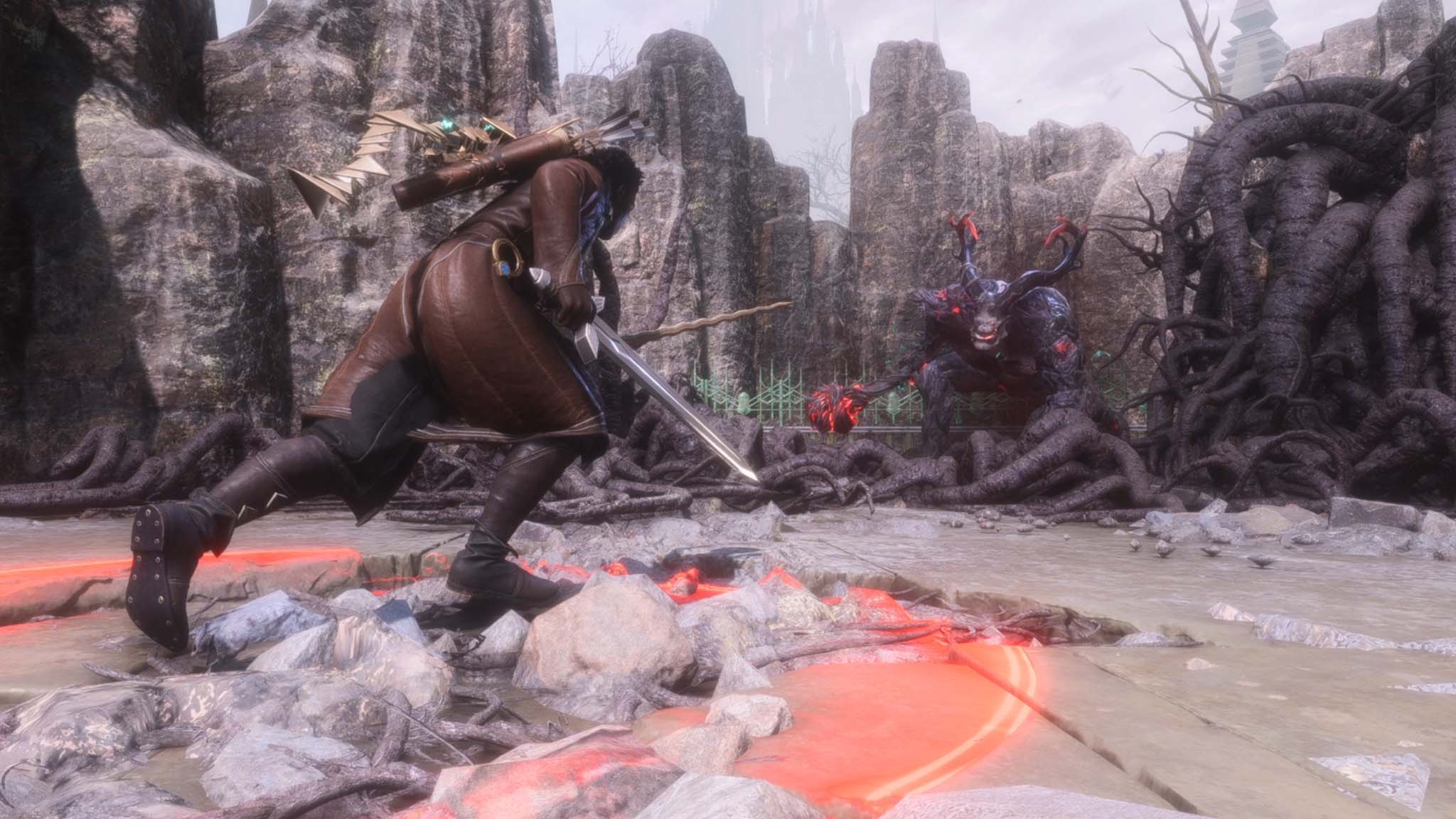
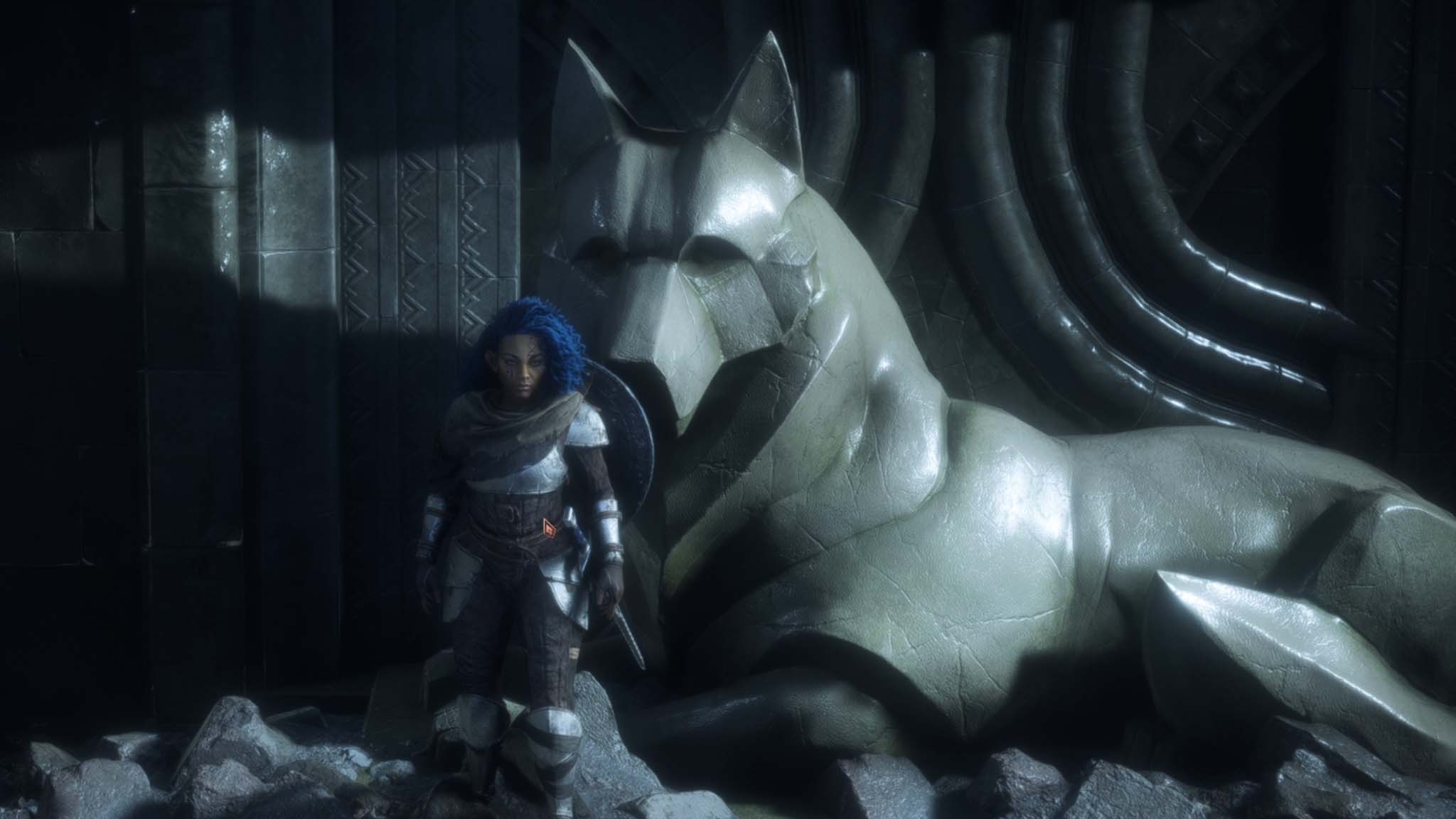
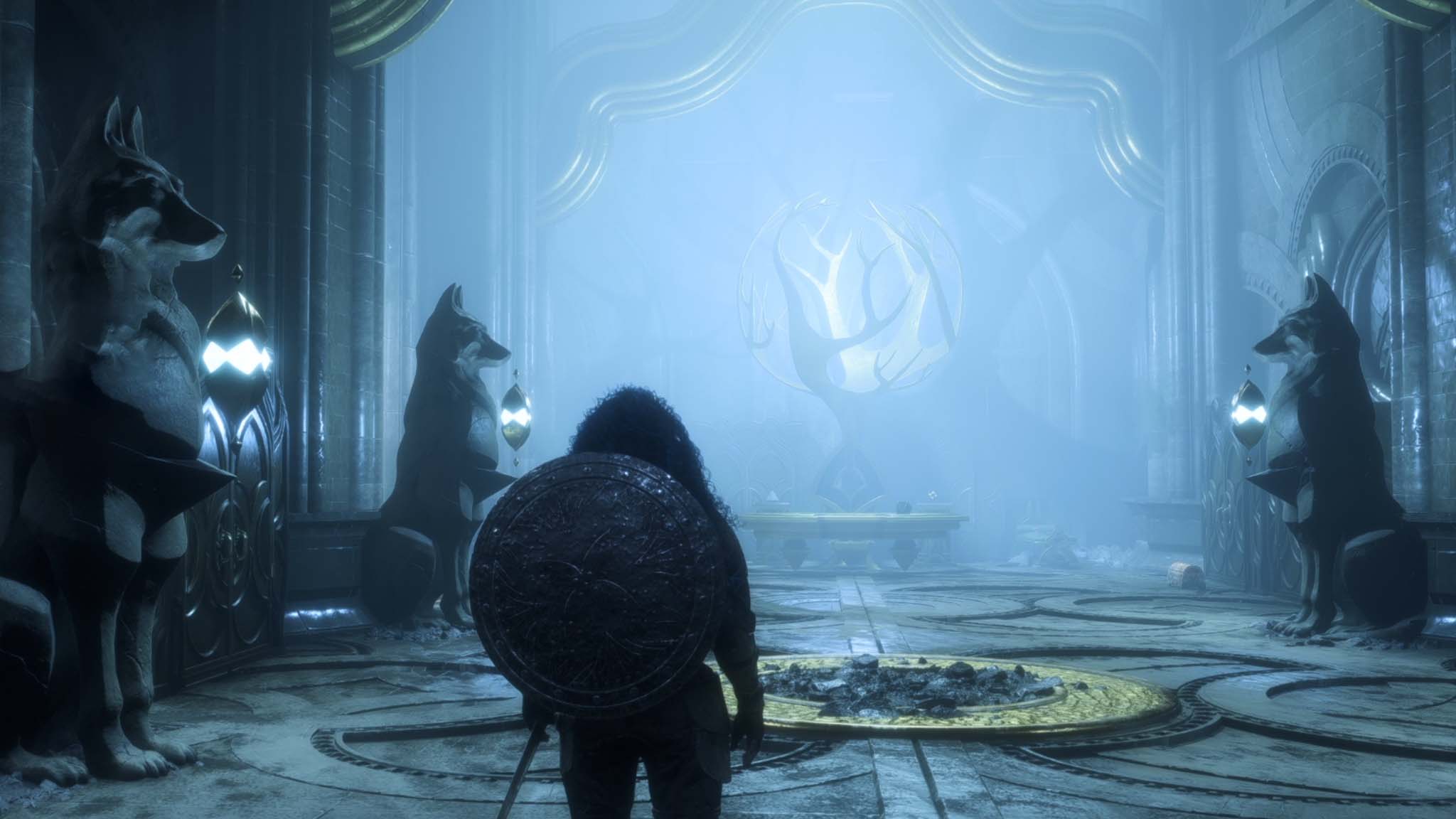
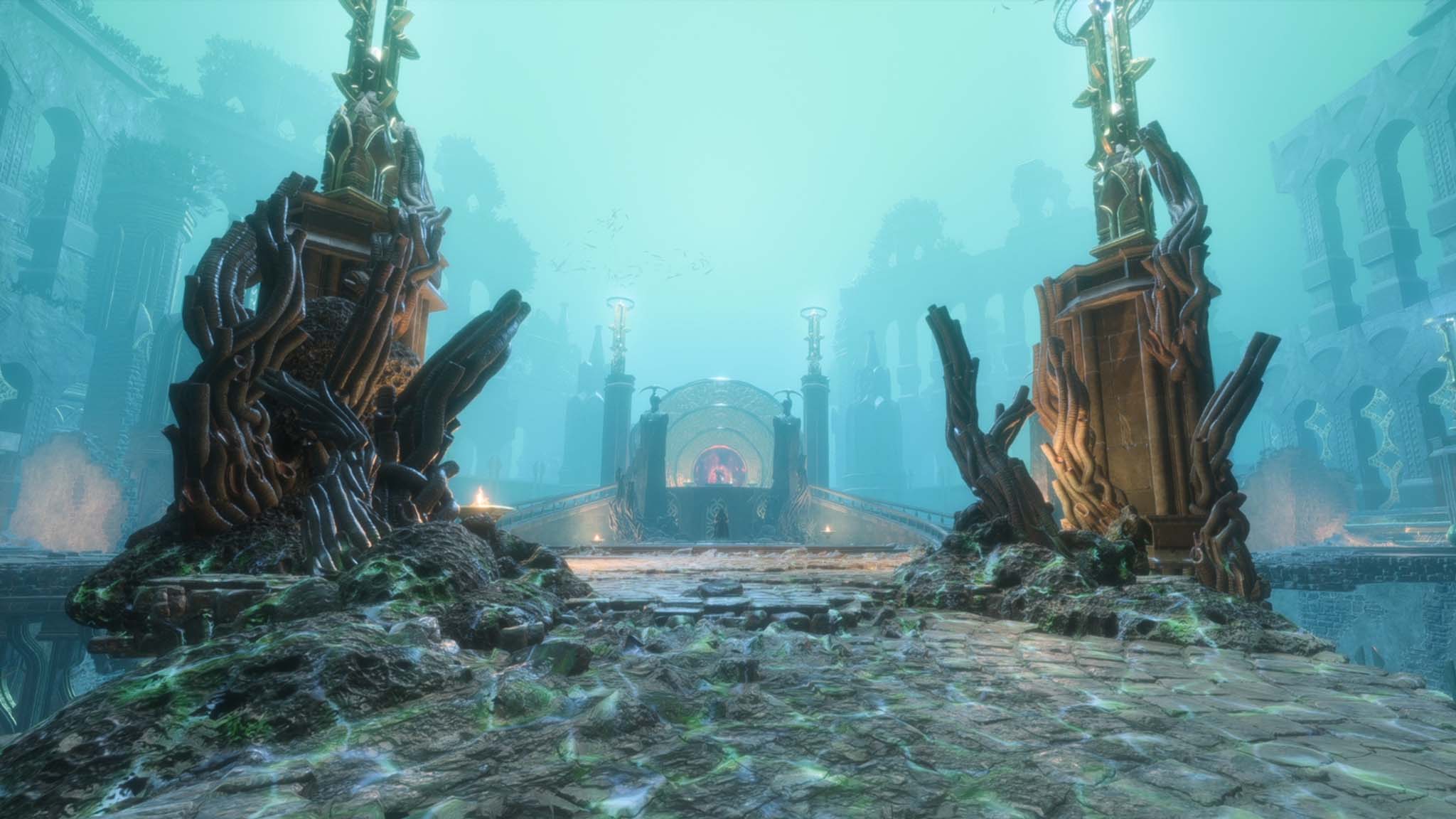
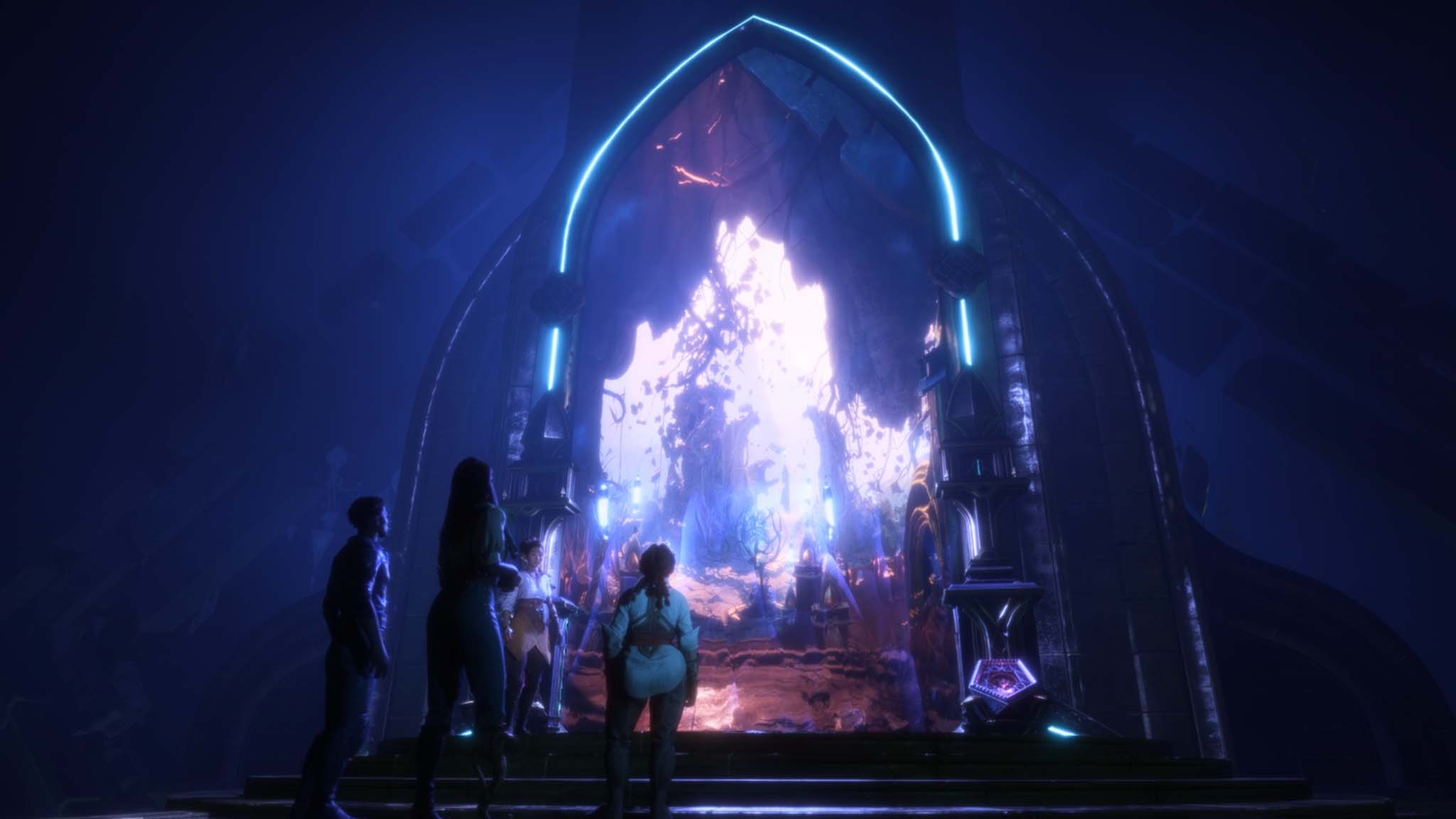
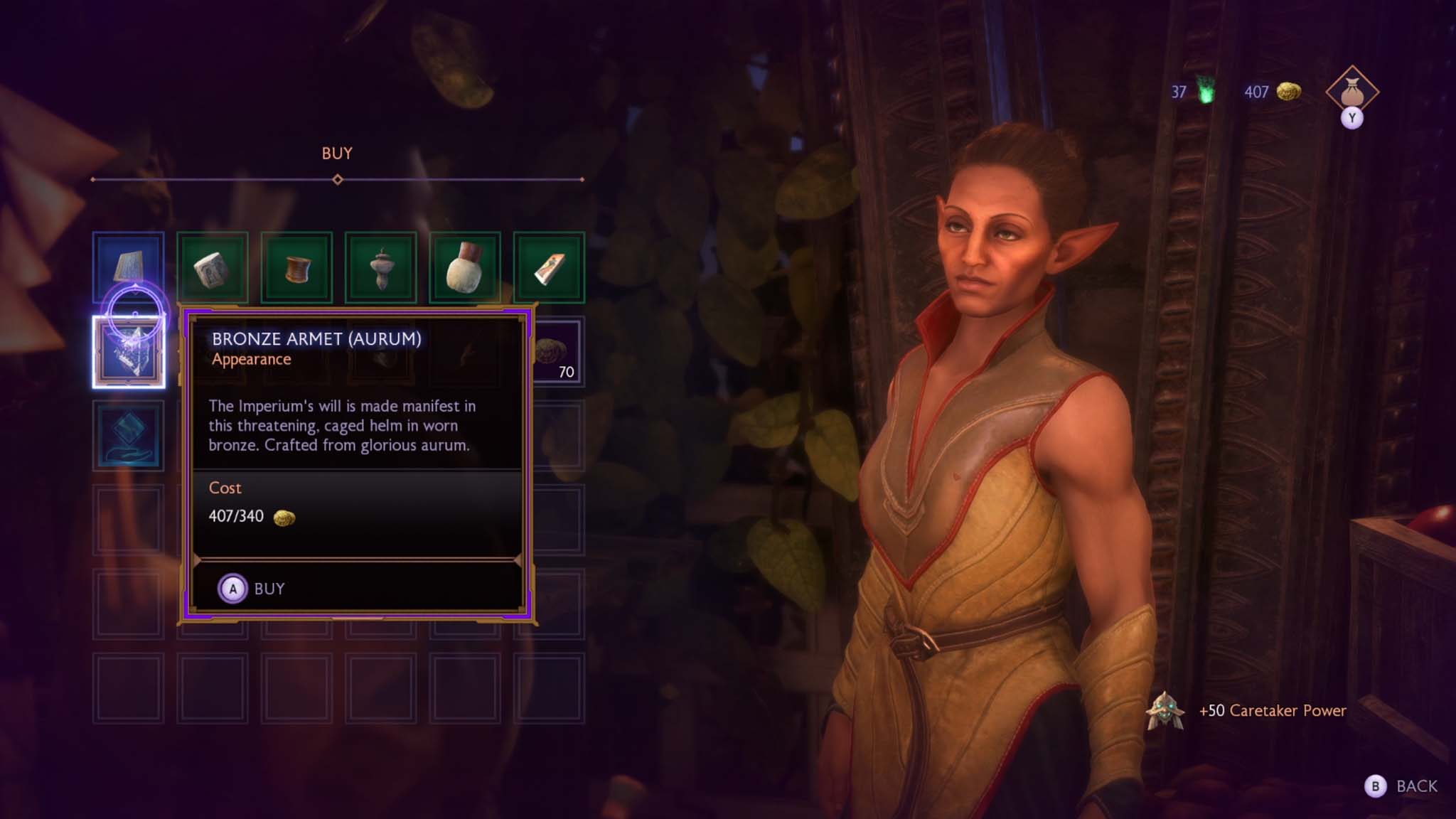
My limited understanding of Inquisition's plot partially prepared me for this direct sequel preview, but not entirely. The Veilguard throws you right into the plot with minimal preamble, which might be a little confusing for newcomers at first. Thankfully, the game's storytelling gives enough details to pique interest and explain the most crucial information pretty quickly without getting overly verbose or exposition-y.
Exploring areas of the game also allowed me to see special cutscenes that further explained the story. However, you have to keep an eye out for these experiences because you can miss some if you aren't careful. It's just one of the ways that The Veilguard rewards exploration.
What about DLC and expansions?
When I asked if there are any DLC or post-launch expansions planned for The Veilguard, Busche replied, "Our focus right now is to make the best single-player RPG that's out there, so we're very focused on just making this featured content as complete as we can." It might not be the best news for some, but it's good to know that The Veilguard team isn't banking the game's success on post-launch content, which can sometimes feel cheap and unpolished.
Impactful decisions that affect story, companion relationships, and romancing
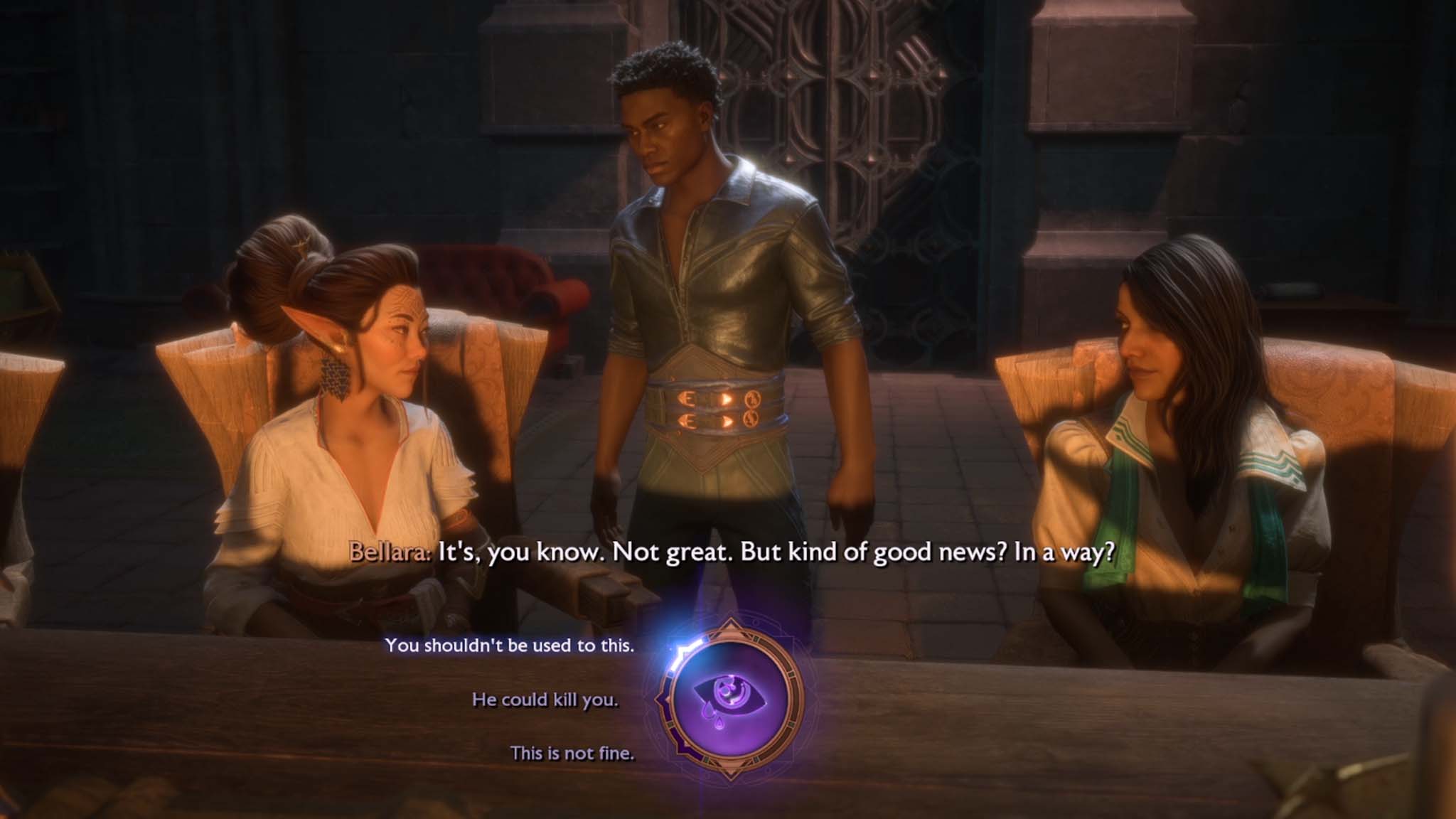
Depending on the mission, I can have up to two companions in my party at a time. Each of my companions has their own background that I can learn more about if I take on their specific quests. This gives them more depth and can affect our bond when I choose to undertake these missions. What's more, companions have unique abilities that can help me traverse maps or solve puzzles. I can command them to use their abilities when in my party, but when they are not there, an item called the Lyrium Dagger allows me to use their abilities myself, which is really convenient.
As with previous Dragon Age games, The Veilguard's players are frequently given the chance to respond to NPCs and situations. Hovering over a response even makes an icon appear, letting me know what the overall intention behind my response will be — abrasive, sarcastic, caring, etc. The choices I make sometimes affect my companion's approval of me and can even have lasting repercussions on the story and character relationships.
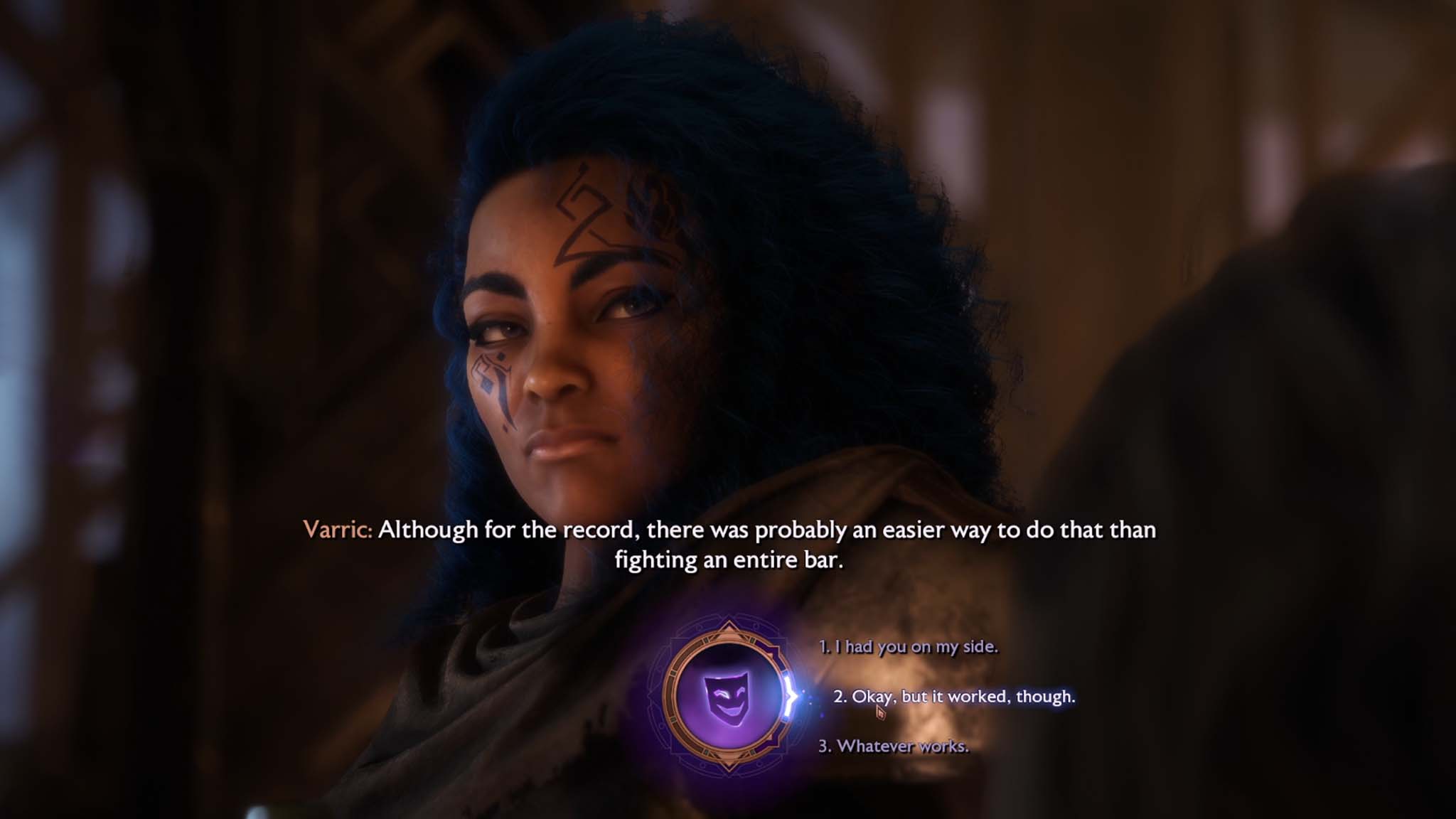
For instance, near the start of the game, I had to decide between having Neve or Lace accompany me on a dangerous endeavor that would put them in harm's way. I won't mention any specific consequences I experienced during my playthrough, but I can tell you that some of them are pretty game-changing. During tough decisions, I often upset some companions and put others at ease, which adds to the game's complexity. This fact already has me itching to play certain sections of the game again and make different choices.
Just like with other BioWare games like Mass Effect, players can also romance their companions. However, the team says it has made a concerted effort to make the romance system feel more natural, including making it so that some of the companions can even fall in love with each other.
I want to be clear that it's not player sexual. These are fully fleshed-out characters that have their own romantic histories, preferences, backgrounds, and that doesn't change based on who you, the player character, are.
Corinne Busche
"Handling romances and romantic options. It's quite the challenge," said Busche, "and to be honest with y'all, I'm not sure there's a right answer on how to approach it. What we felt was best for this game was to make sure that you could romance the companions, but I want to be clear that it's not player sexual. These are fully fleshed-out characters that have their own romantic histories, preferences, backgrounds, and that doesn't change based on who you, the player character, are. They don't adapt their personalities to conform to the player, and that's fundamentally the difference."
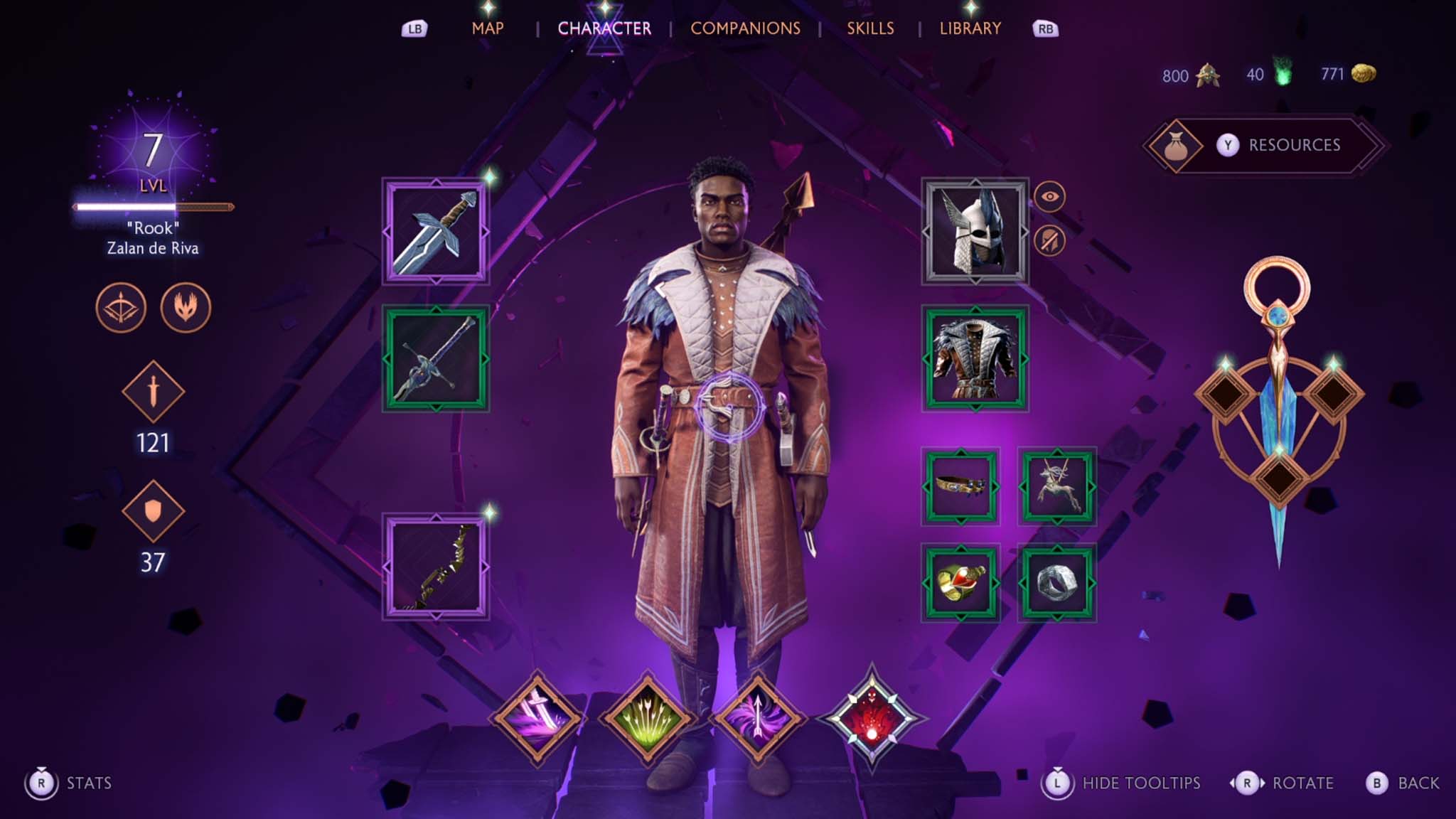
She further explained, "We're also mindful to have characters in the world of all orientations, so that we do get that really thoughtful representation again, where people can see themselves."
Since I was jumping between different character builds throughout my playthrough, I couldn't fully get a feel for the overall romance system other than being able to flirt now and then with different companions. However, the fact that some companions can form relationships with each other if you aren't involved makes me curious about how those relationships could affect the story.
Combat, gameplay, and performance
During the preview, I played The Veilguard on a PC that sported an AMD Ryzen 9 7900X processor and an RTX 4080 graphics card. These aren't the most powerful chips on the market, but they are pretty high-tier. That said, The Veilguard PC system requirements aren't super demanding, so you don't need this kind of rig to play. I didn't have an FPS counter running or anything, but The Veilguard ran beautifully, with smooth movement, no screen tearing, and hardly any pop-in.
The only thing that felt strangely limited was jumping. Rook immediately scrambles up mantle-able rocks and objects if I move the character into them, but Rook can't jump very far. This might be by design, to force you to engage with puzzles a certain way, but it did feel odd at times.
While playing, I alternated between using a keyboard and mouse and an Xbox Controller to get a feel for both of these control inputs. Both layouts felt intuitive and comfortable to use.
Gameplay that's hub-world based rather than open-world
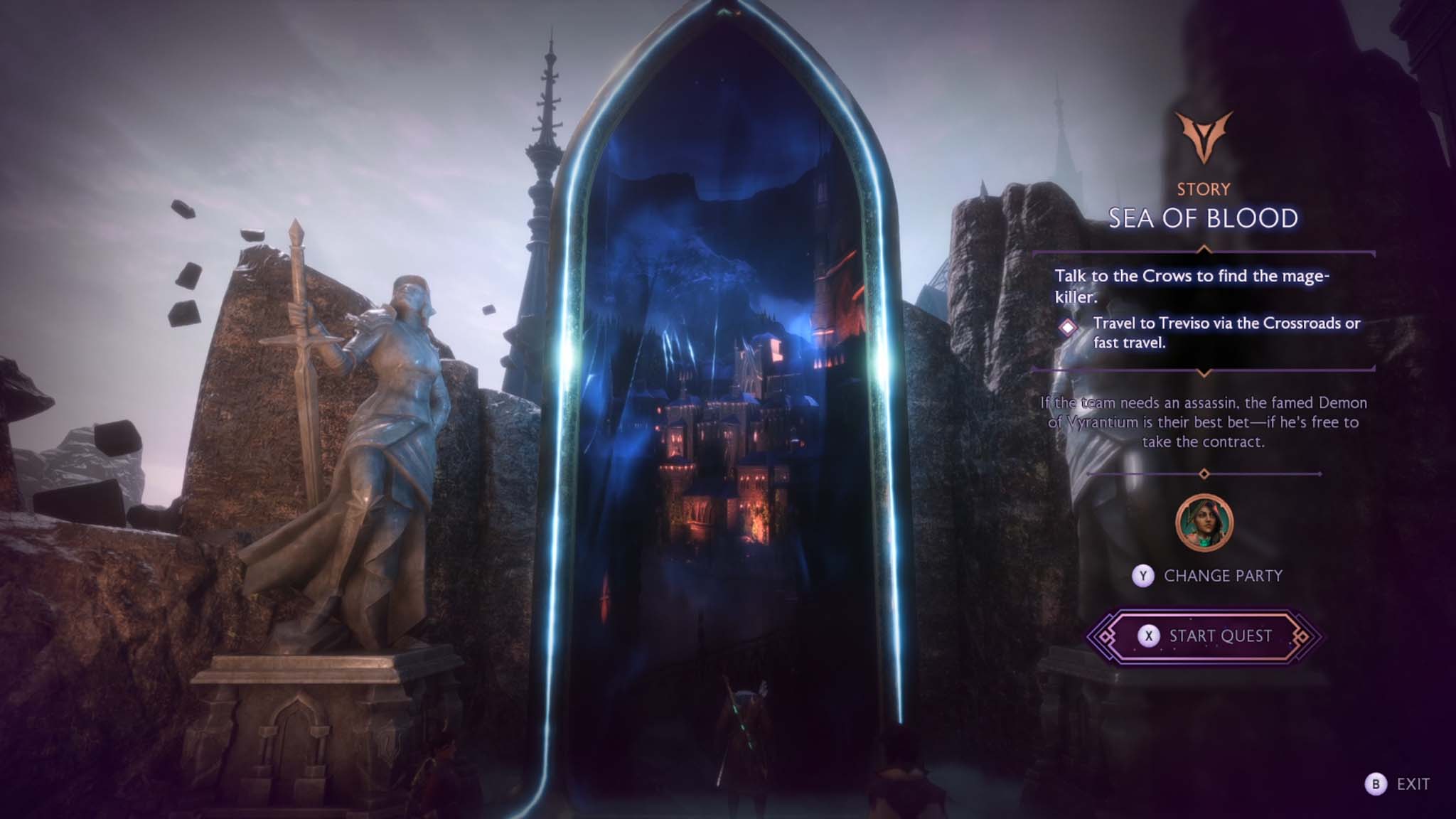
Gamplay-wise, rather than being a fully open-world game, The Veilguard incorporates hub-based missions with players using magical elven mirrors known as Eluvians to start new quests. Busche explained that "it's hard to buck trends" [like open-world gaming] but that the team "really felt we could tell the best stories... The most curated moment-to-moment experience by really going back to a mission-based structure." As someone who really likes plot-focused games, I found this choice suited The Veilguard very well.
When I asked how big The Veilguard is, Busche responded, "the thing that I think we're most proud of, when we think of the breadth of the game, is just the sheer number of biomes and regions we're revisiting. We cover more of Thedas than we ever have before...there's going to be a lot there for people that really want to just immerse themselves in this world building."
We really felt we could tell the best stories... The most curated moment-to-moment experience by really going back to a mission-based structure."
Corinne Busche
In between quests, I found myself at The Lighthouse, a basecamp where I can talk to my companions and explore an abandoned facility. Historically, with Dragon Age, this basecamp area has been important for having conversations with your companions and strengthening your bonds. To help streamline this, The Veilguard lets me know if a companion has something to say by turning the lanterns on in front of their rooms. So, there will be no more wasted wandering around to see if a character wants to talk.
Classes, level cap, and combat mechanics
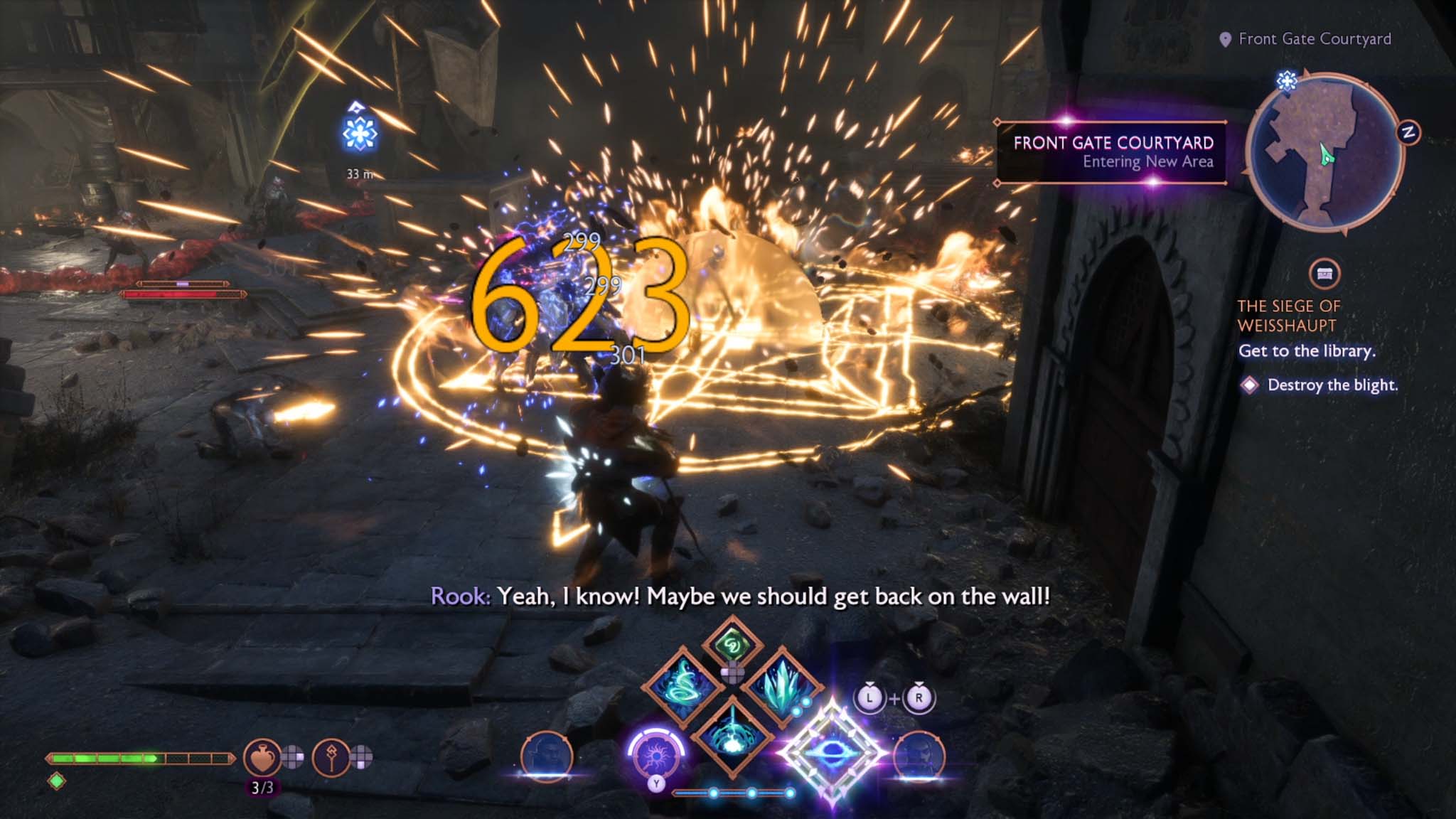
During the preview, I spent a few hours playing as a Warrior (roughly level 1-5), a Rogue (roughly level 6-8), and finally, a Mage (level 30+, if I recall correctly). While there are some similarities between these classes, they do play very differently in The Veilguard's action-based real-time combat.
In my hands-on time, I discovered that each class feels good to play and offers unique attacks and satisfying controls. You, as a player, will need to determine which class feels right for your preferred playstyle. Warriors are tanky and go right up to enemies, knocking them down with their shields and slashing with their swords. Rogues offer a mixture of ranged and melee combat, which gives them flexibility in battle. Meanwhile, Mages are primarily ranged attackers that have low defense and powerful spells. How you choose to evolve your character's skill tree determines what kind of fighter your Rook becomes within these classes.
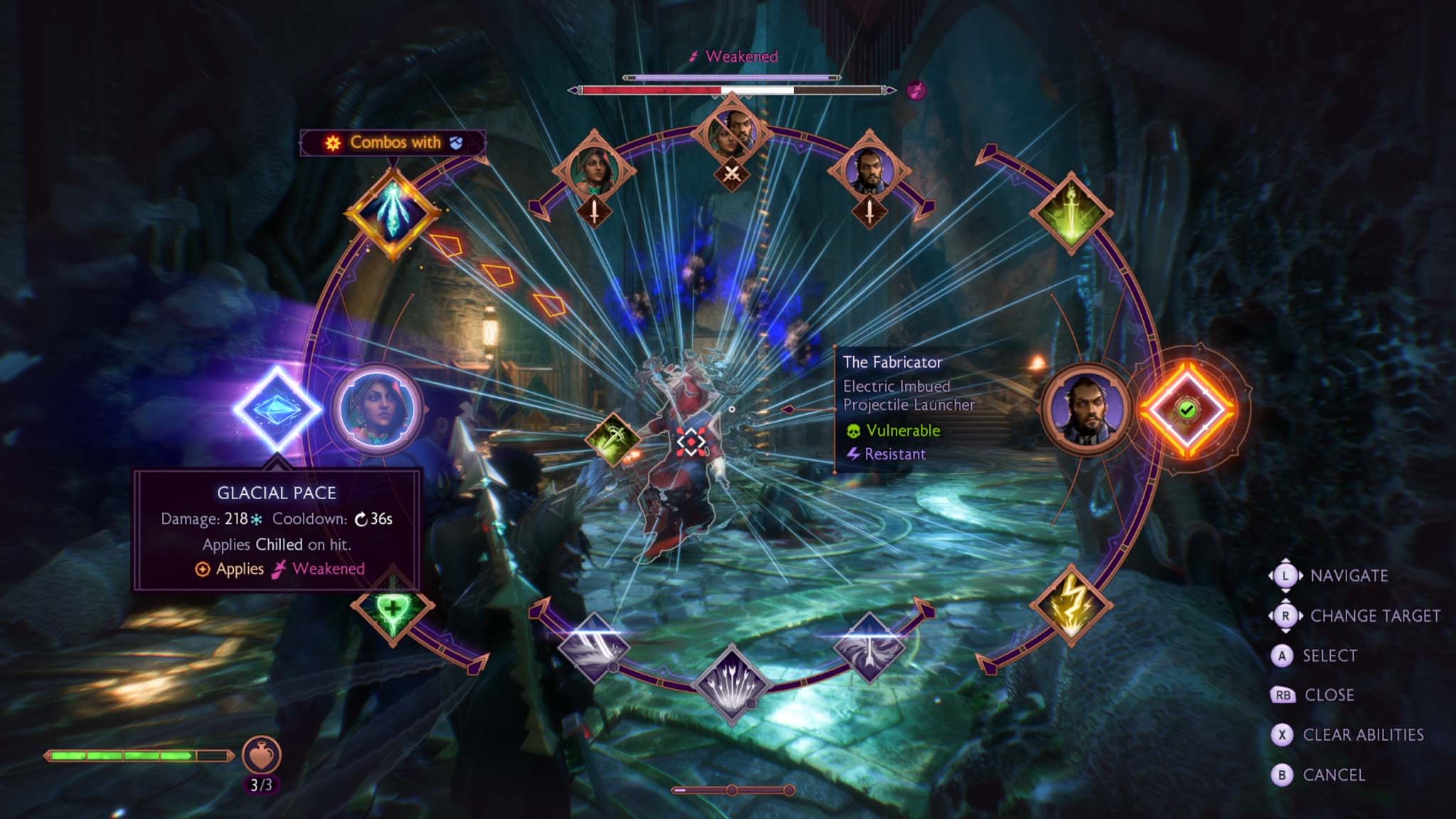
Unlike Inquisition, The Veilguard does not allow players to jump around and control all characters in their party like you can in Baldur's Gate 3. Instead, The Veilguard implements a new Ability Wheel (RB button on Xbox Controller, Tab on PC), which pauses the game and allows me, as the leader of my group, to dictate what kinds of attacks my companions unleash. This system provides a fun mixture of strategy and real-time combat that I haven't quite ever experienced in other RPGs. What's more, it helps me feel more connected to my specific character, which, in turn, keeps me more enveloped in the fantasy world of Thedas than hopping between characters does.
Strategy-wise, if I combine certain characters' attacks together, I can create combos that deal more damage than usual. The trick, then, is knowing when to use specific attacks and when to wait for different cooldowns to finish so I can unleash a similar combo again. All together, combat felt intuitive, very balanced, and satisfying.
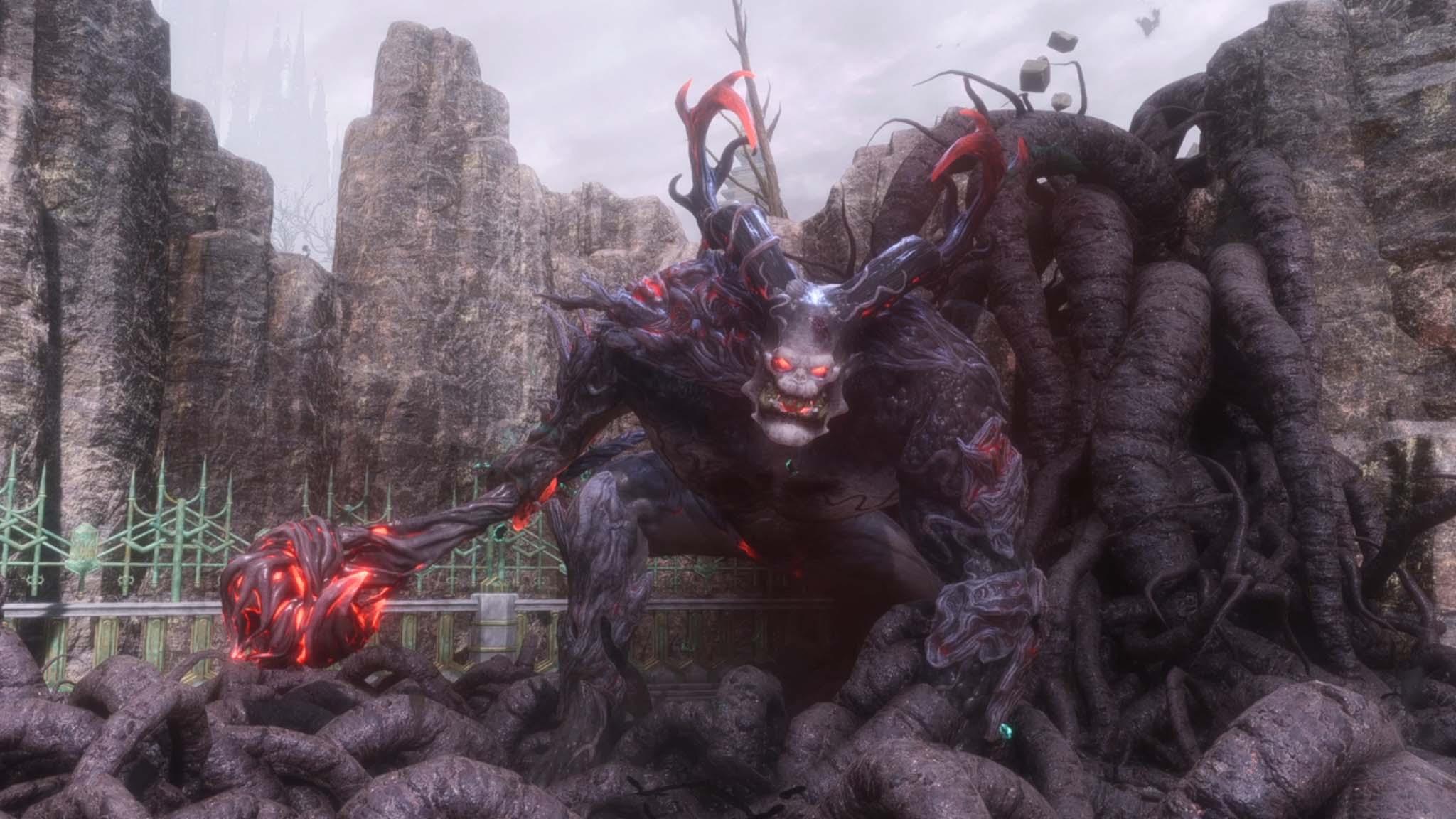
Unlike previous Dragon Age games that cap around level 30, The Veilguard developers have expanded the cap to level 50. Speaking of the challenges faced when increasing the level cap, Busche says it "took a concerted effort, some really insightful forethought in how we were going to handle the underlying damage calculations." She also explained that "enemies scale alongside you; there are moments where you feel like you're maybe overpowering them, and then they leap ahead of you to keep you constantly engaged and pushing forward.
"Enemies scale alongside you, there are moments where you feel like you're maybe overpowering them, and then they leap ahead of you to keep you constantly engaged and pushing forward."
Corinne Busche
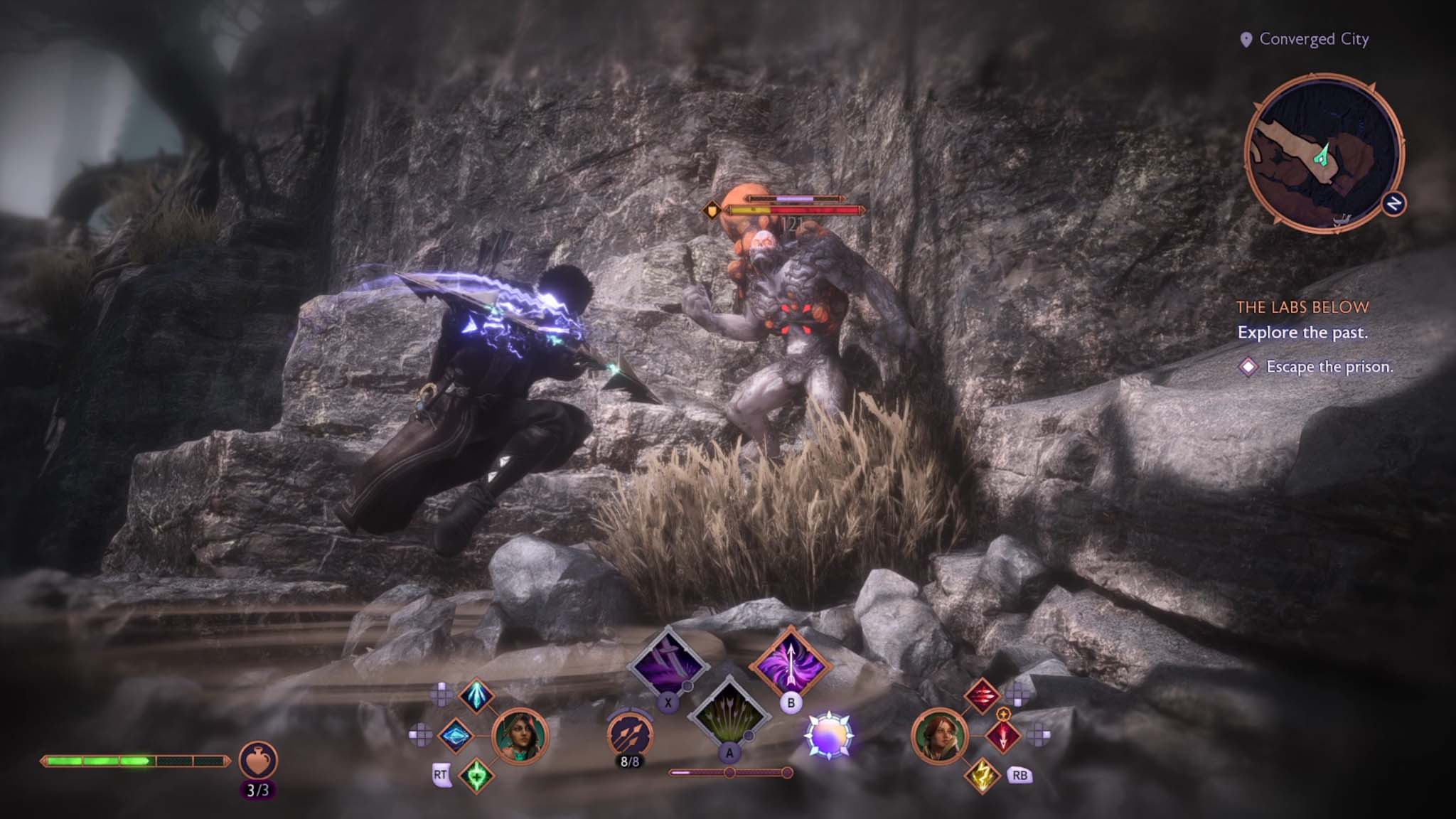
"We want players to find emergent builds." Busche continued, "We want them to feel like they can outsmart us. Maybe not obliterate the game," she laughs, "so when we find those, we try and roll them in. But, my goodness, nothing would make me happier than somebody outsmarting our best tuners." Based on my own experience, The Veilguard team did an excellent job in this regard, allowing me to feel more powerful with plenty of combat options while still providing a challenge even after I upgraded gear, my character, and my companions. As with most RPGs, it is crucial that I acquire the right kind of gear and upgrade my character appropriately if I want to stay on top of things.
So, is The Veilguard approachable for new players?
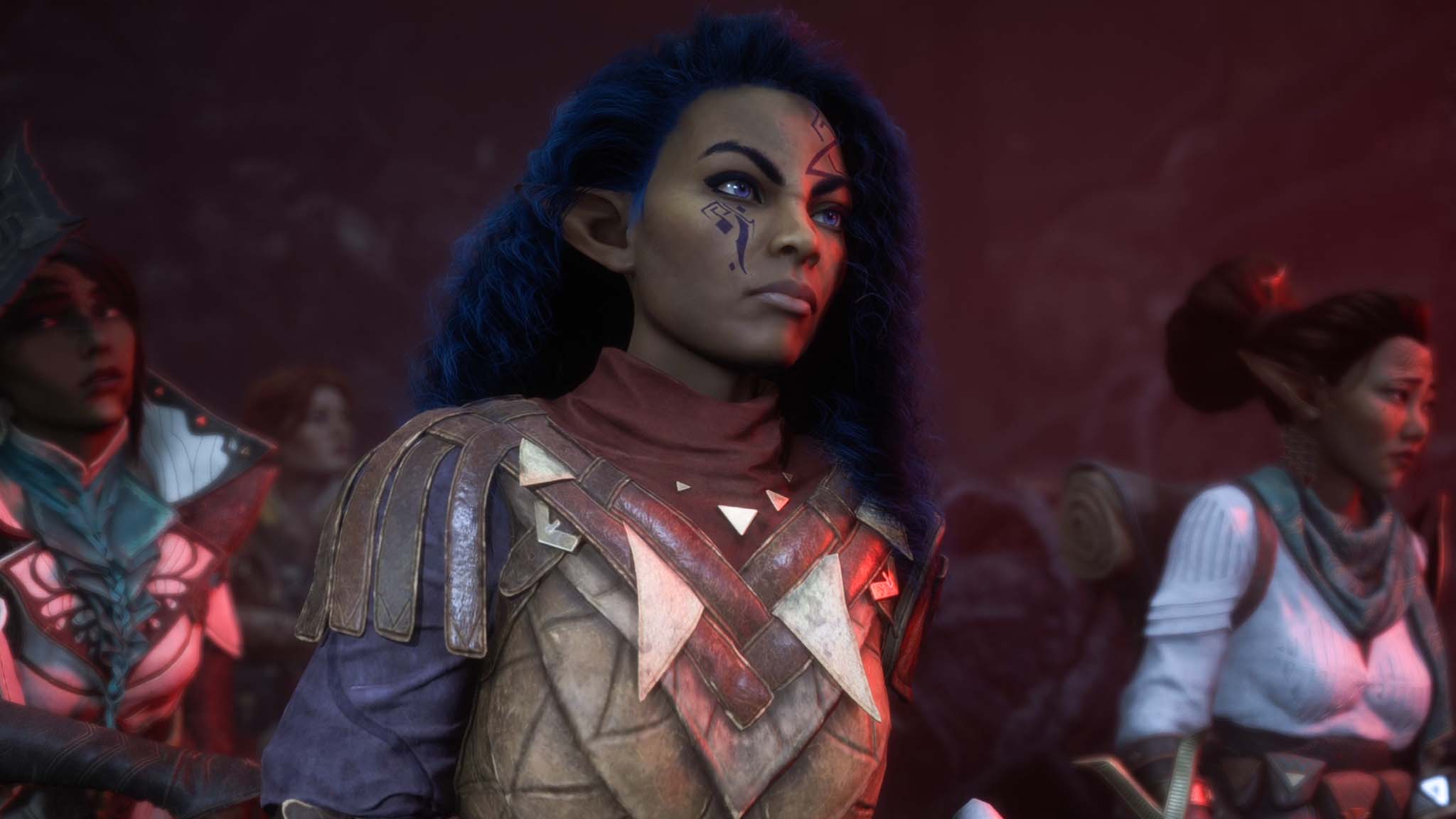
Based on my experience with The Veilguard, I think it will be relatively easy for new players to enjoy. You'll definitely have a better understanding of world lore and faction relationships if you've played previous Dragon Age games. However, The Veilguard's story opens in such a way that it quickly teaches you the most important aspects so you aren't lost; you can learn more along the way.
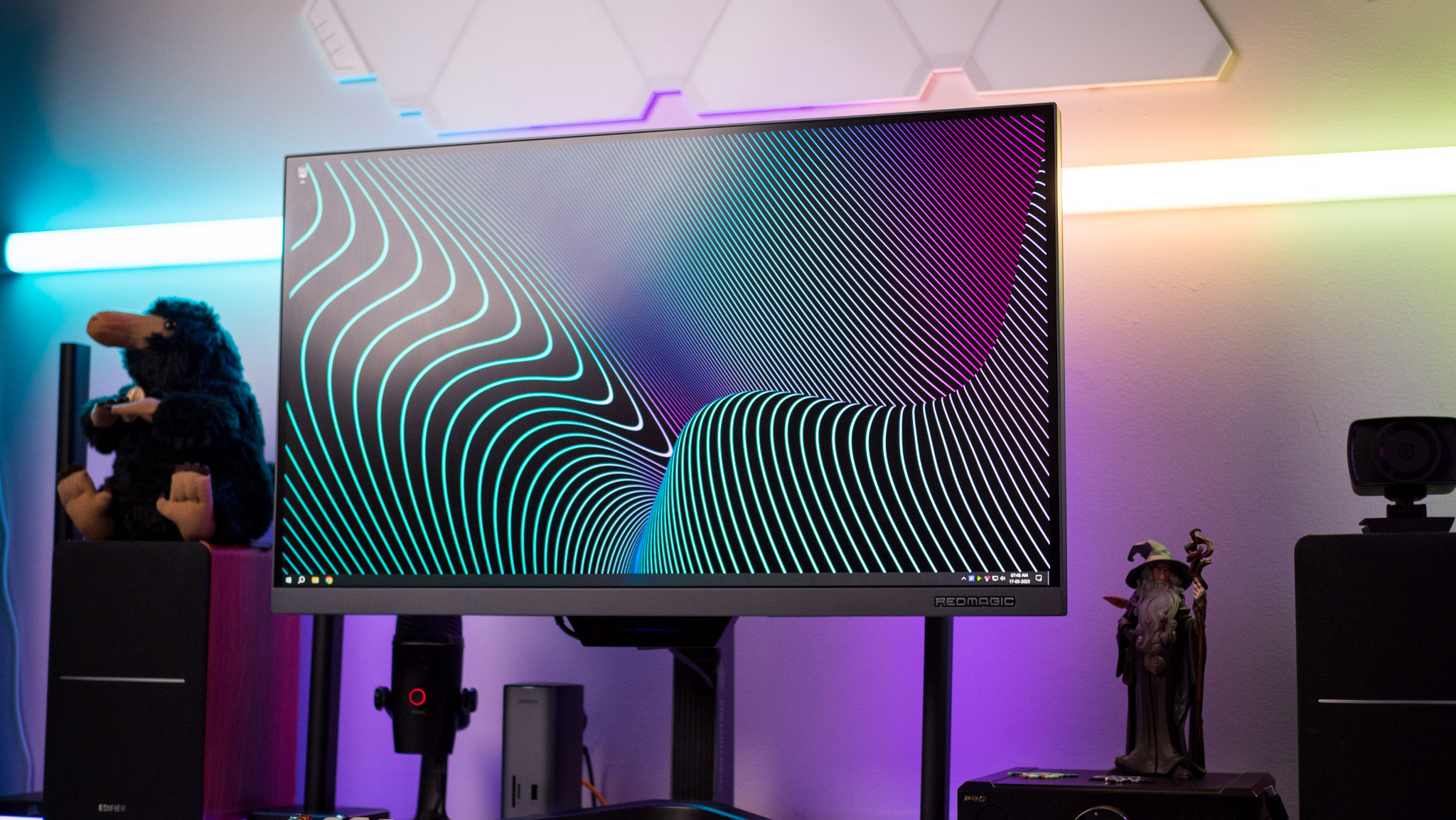
• Best Xbox / PC headsets
• Best upcoming Xbox / PC games
• Best Xbox controllers
• Best Xbox accessories
• Best small gaming PCs
• Best gaming laptops
When I asked Busche and Cheverie if they had advice for people new to Dragon Age, they smiled and told me, "just jump in." They further said to start with The Veilguard and go back to previous titles from there. It's clear these long-time Dragon Age veterans really love this franchise as they explain that they're a little jealous of me and wish they could experience Dragon Age for the first time like I'm currently doing.
Since The Veilguard is offered on several different platforms, you'll be able to experience it the way you prefer, whether you're a returning veteran or a new player like me. Busche explained, "I passionately wanted to make sure not only that this is the best PC experience we could offer, but getting a lot of devices like Steam Deck" was important. This involved "making sure that the size of the UI elements, the Fidelity, and more were legible on this smaller device." Personally, knowing that The Veilguard is Steam Deck verified makes me want to play it on my Steam Deck or my ROG Ally. I can't wait to dive in when the game launches later this year.
Dragon Age: The Veilguard releases on PC (via Windows), Xbox Series X|S, and PlayStation on October 31, 2024. This game is also Steam Deck verified. It's an action-adventure RPG that's available in either a Standard Edition or Deluxe Edition. For more information, you can check out our The Veilguard preorder guide.







